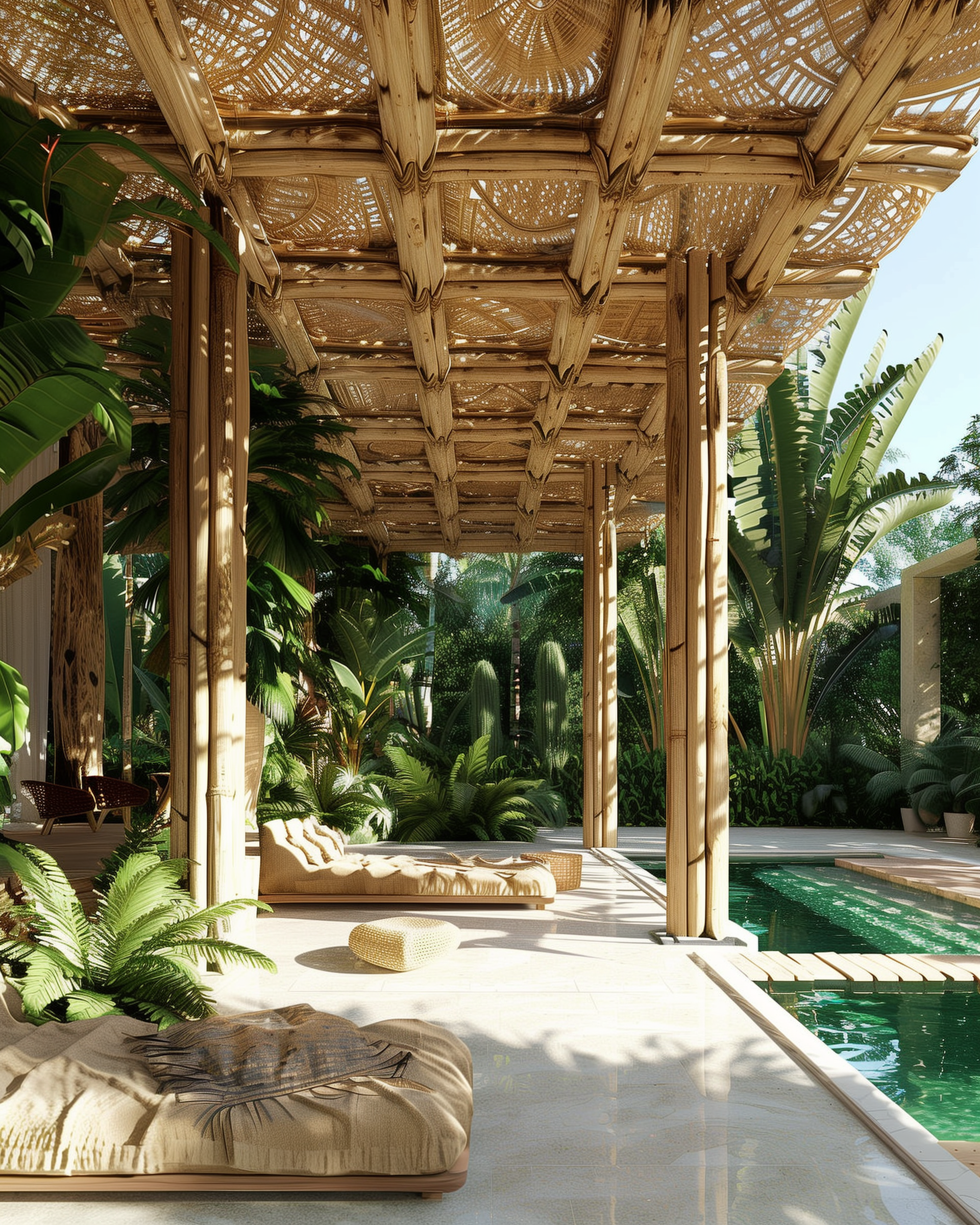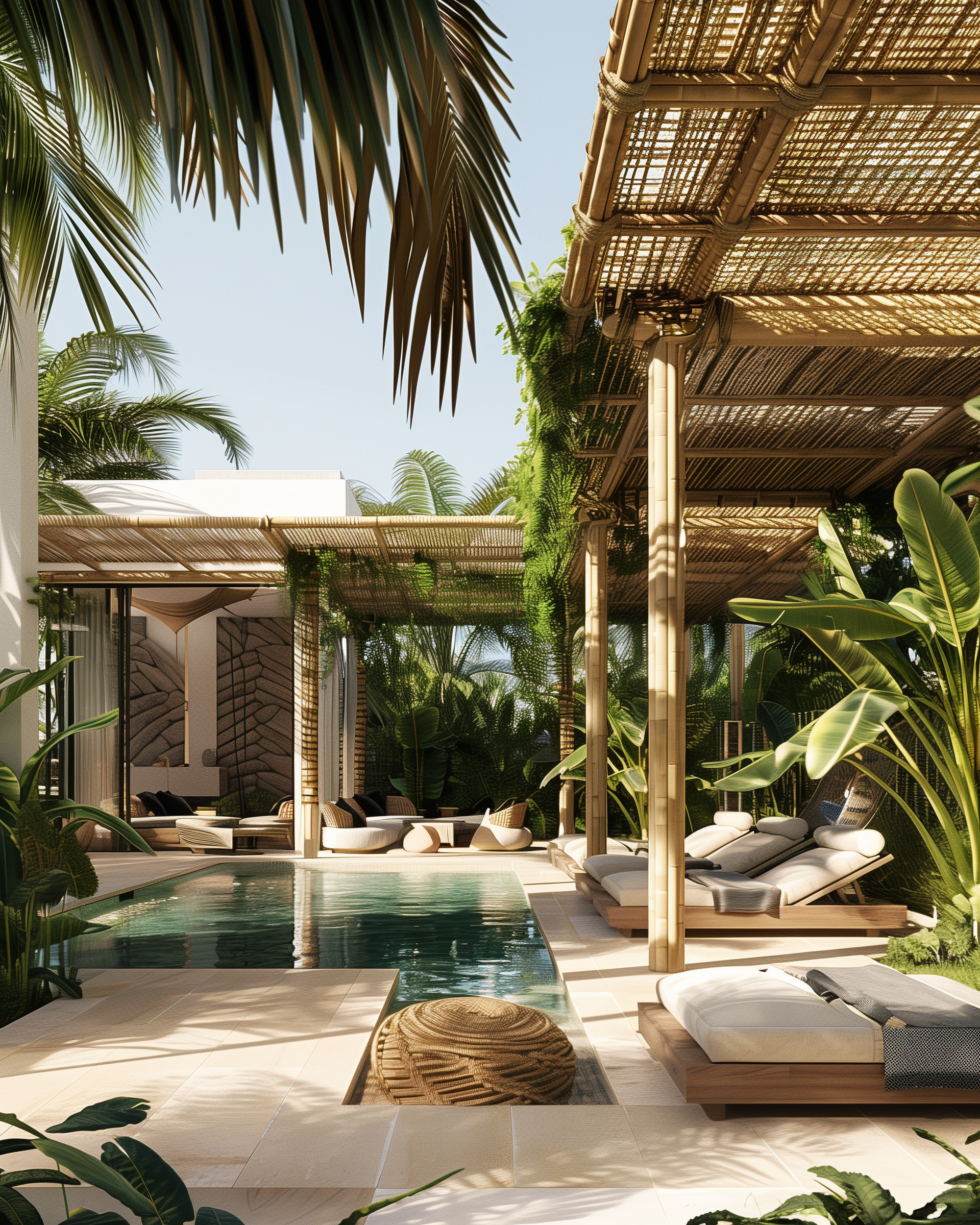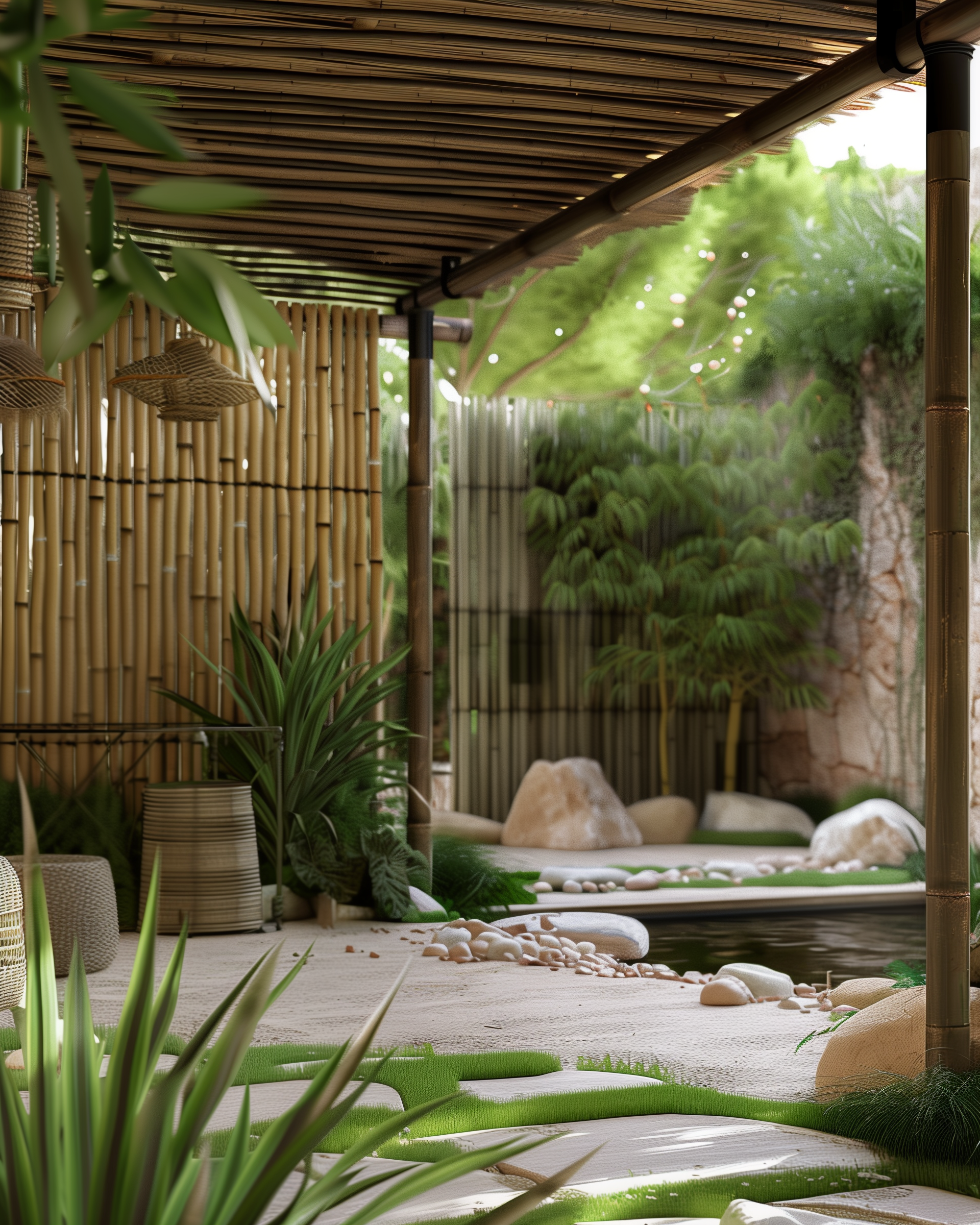
MATERIALS
Bamboo
Bamboo is a stylish and eco-friendly choice for bringing a natural, laid-back vibe to the space. Perfect for creating pergolas, chic shade canopies, or stunning accent walls, bamboo adds that tropical touch that fits right into Ibiza’s relaxed yet luxe lifestyle. It’s lightweight but surprisingly strong, making it a great design feature, though it’s not the best for heavy-duty structures unless treated for durability. If you’re after a clean, modern look, bamboo is best as an accent rather than the star. It will do well in conveying tropical or far-eastern design moods.
Bamboo is available in form of various products suitable for different applications:
Poles - Natural bamboo stalks used for pergolas, walls, and decorative accents.
Panels/Sheets - Pressed bamboo layers, perfect for wall coverings, ceilings, and flooring.
Engineered Bamboo (Laminated) - Strong bamboo planks/boards used for flooring, furniture, and structural elements. Composite Materials - Bamboo fibers mixed with plastic or resin, for decking and outdoor furniture.
Plywood - Layers of bamboo strips, great for cabinetry and furniture.
Veneer - Thin bamboo sheets used as a decorative surface on furniture or walls.
Ceramic Tiles
Ceramic tiles have a long history in Mediterranean design, and in Ibiza, they can be a great option for blending modern luxury with traditional island aesthetics. With their origins in Moorish architecture, tiles have been used for centuries to add beauty, color, and texture to homes. In modern luxury villas, ceramic tiles bring that historical charm while offering durability and versatility.
Ceramic tiles are available as various products depending on desired look:
Glazed - Glossy, and colorful, great for kitchens and bathrooms, inspired by Moorish designs.
Unglazed - Earthy, natural tiles ideal for outdoor spaces, echoing rustic Ibiza charm.
Porcelain - Durable and versatile, perfect for seamless indoor-outdoor transitions in modern villas. Mosaic - Small, decorative tiles used for stunning patterns in pools or courtyards.
Wood-look - Mimics wood grain with ceramic durability.
Textured - Adds grip and visual interest, ideal for feature walls or wet areas.
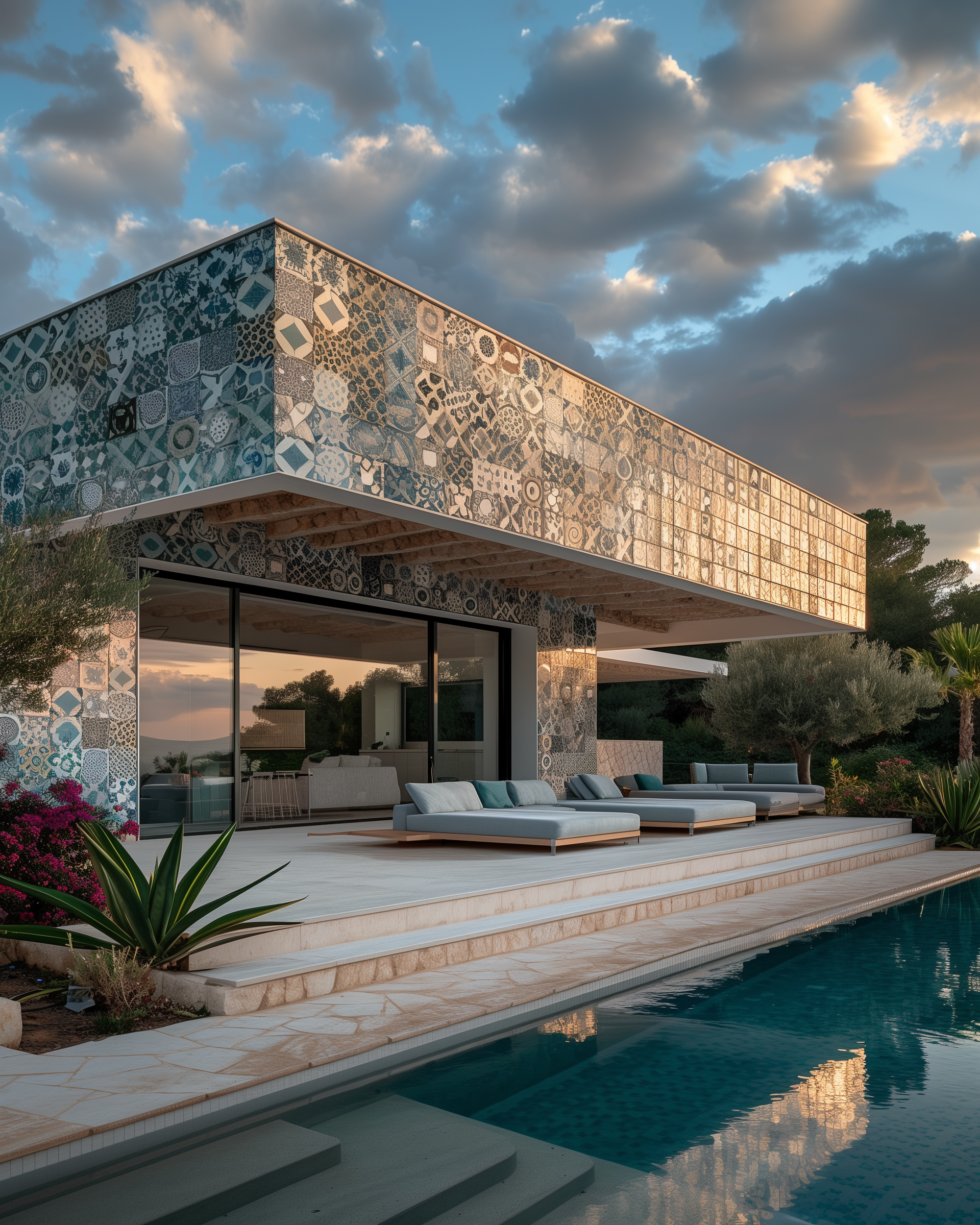
Facade cladding
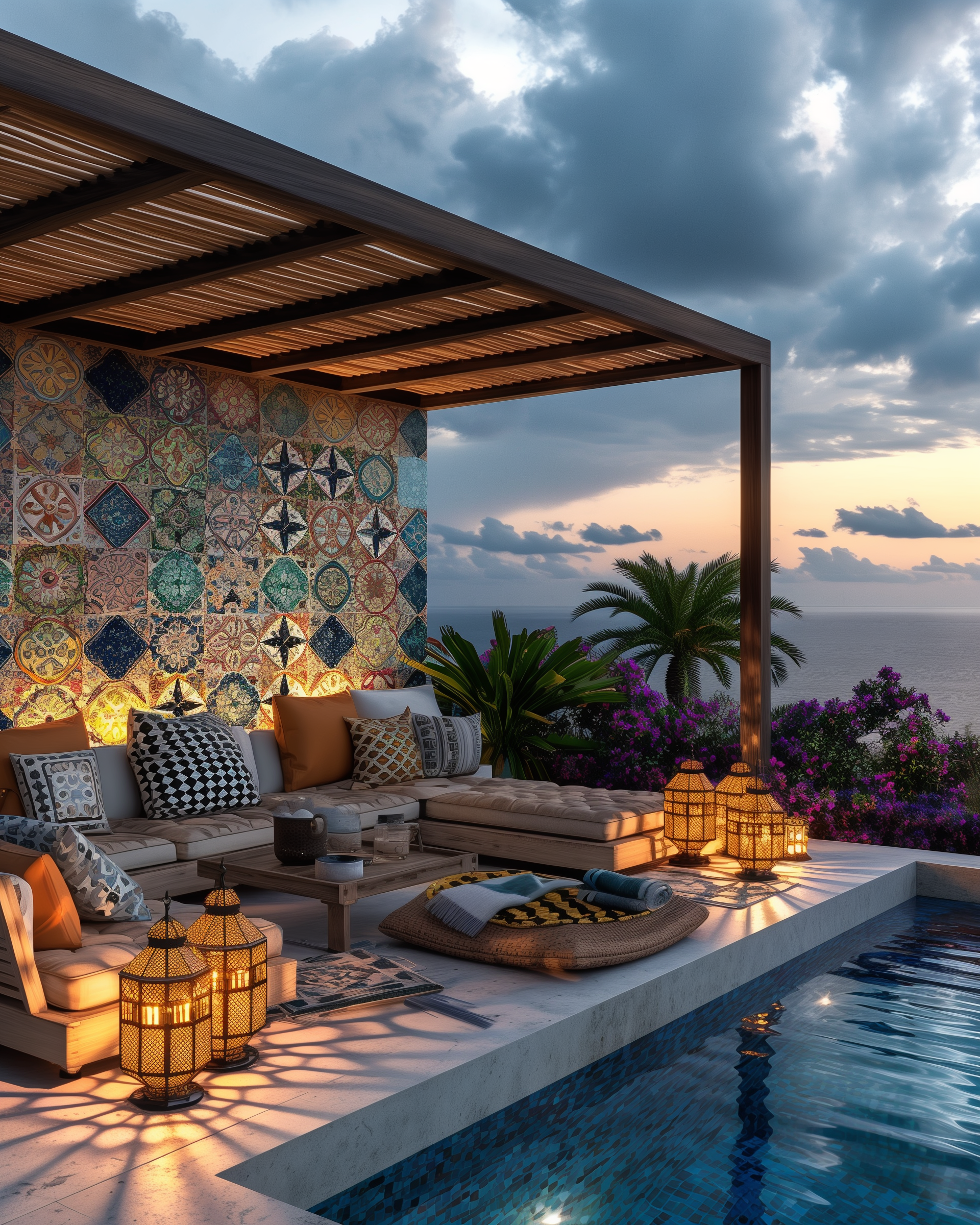
Feature wall
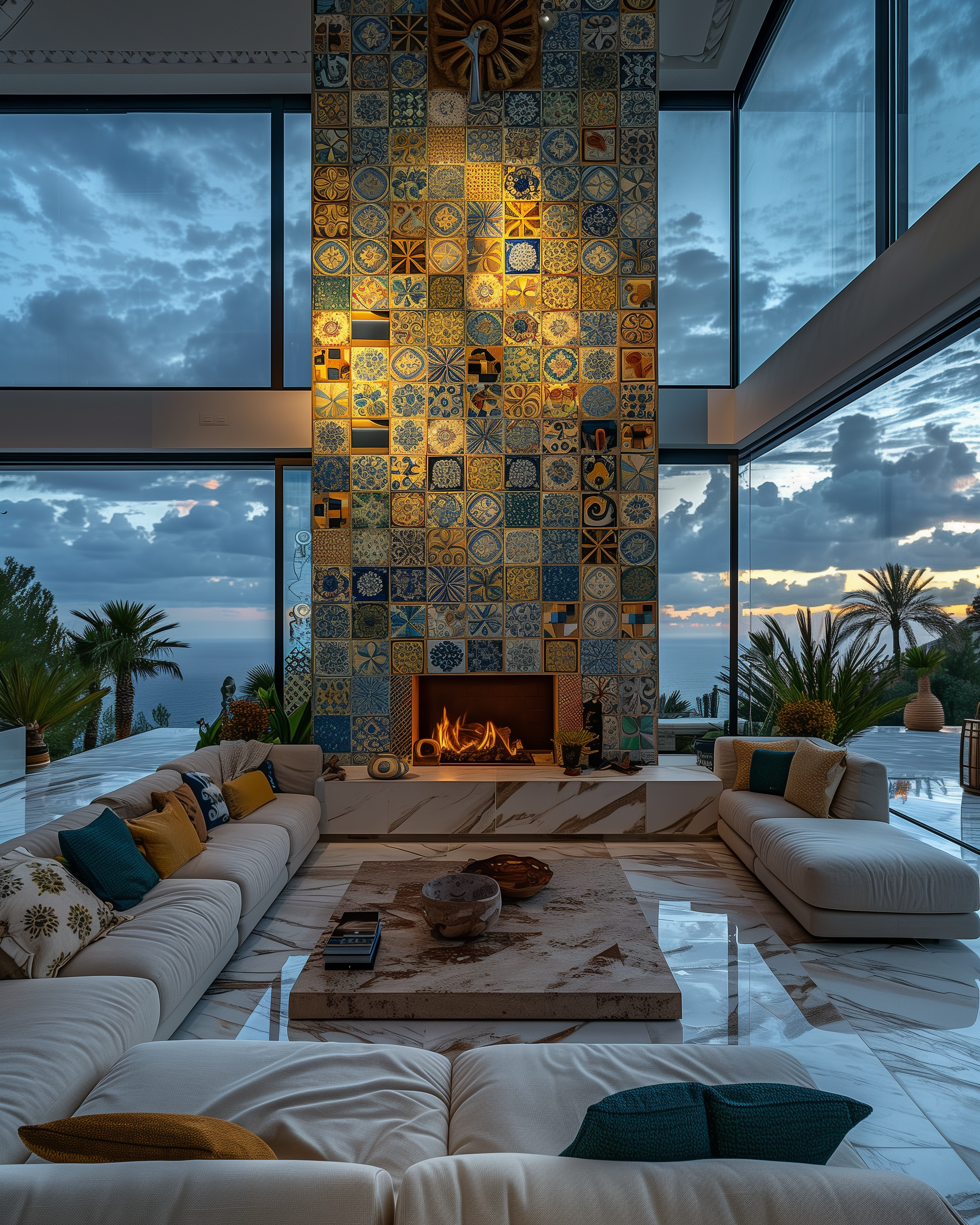
Feature cladding to fireplace
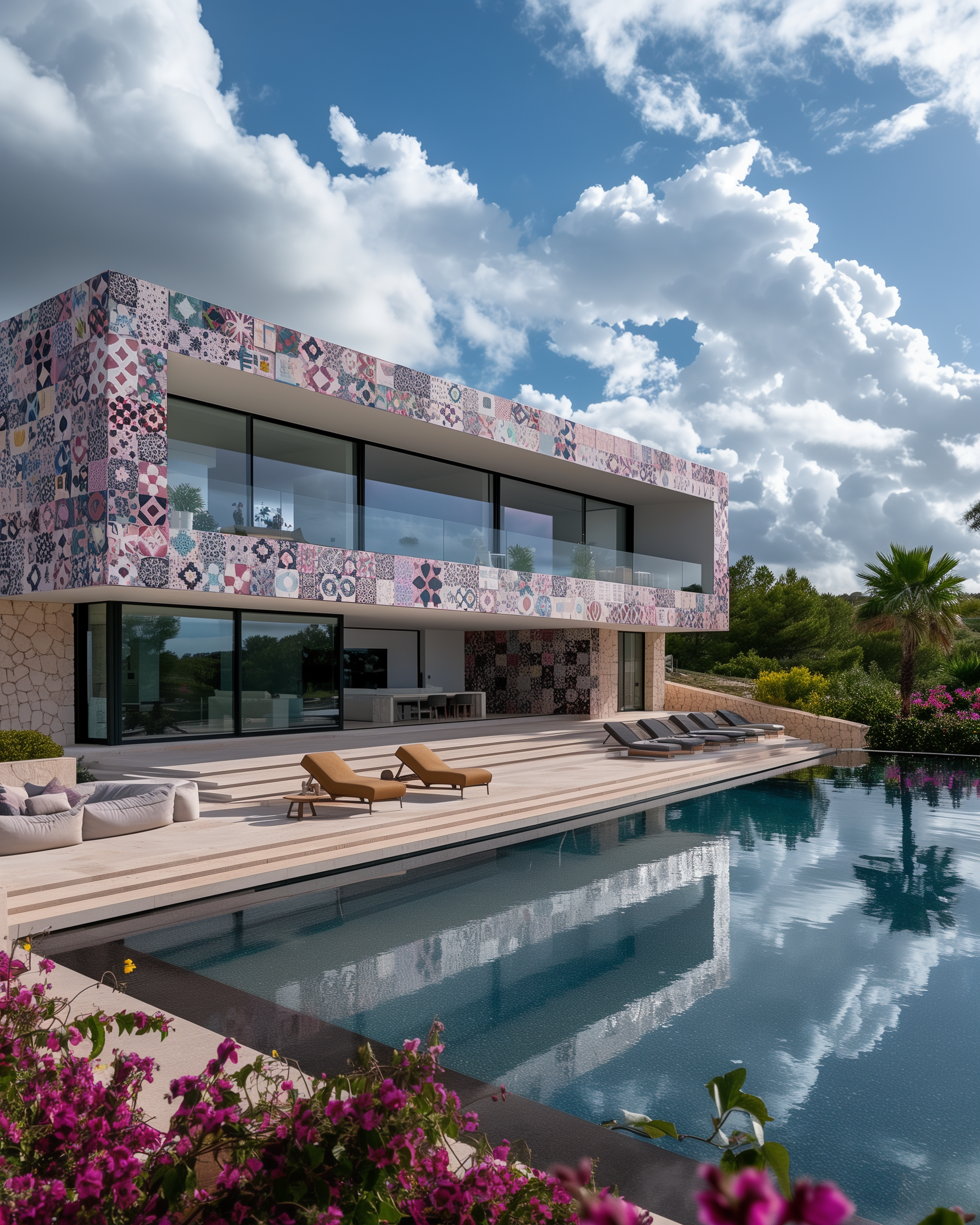
Second floor facade cladding

Facade and pool cladding

Facade cladding
Coral Stone
Coral stone is a specific type of limestone containing fossilized corals and marine life which gives it a unique texture. Due to this subtle organic feel it works perfectly with the more natural features like living walls and water elements. Coral stone is a natural material historically used in Mediterranean and tropical architecture, its porous texture and light tones provide a natural, elegant feel, ideal for blending with the island's landscape.
Coral stone can be used in different forms:
Polished - Smooth, sleek finish, perfect for indoor flooring or accent walls with a luxurious touch.
Rough - Textured stone used for outdoor walls or garden pathways.
Pavers- Durable and slip-resistant, ideal for pool decks and patios,. Tiles - Flat-cut for use in flooring and walls.
Cladding - Thin layers of coral stone used for exterior facades.
Veneer - Lightweight and versatile, used as a decorative finish.

Rough coral stone feature wall and shotblasted terrace paving

Feature wall of large-format rough coral stone

Material Variants Board
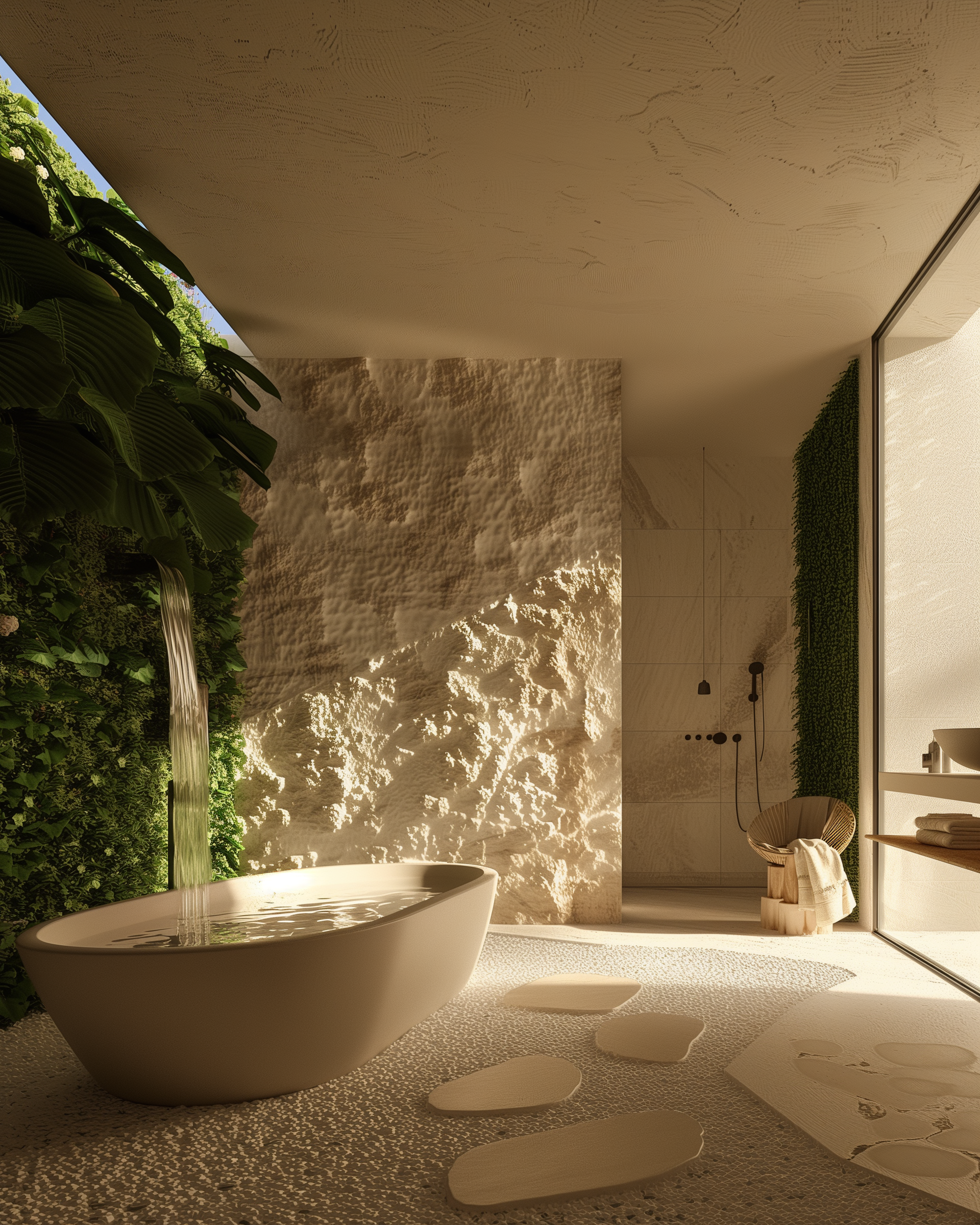
Bathroom with feature rough coral stone wall

Facade with coral stone cladding and coral stone terrace tiling
Mosaics
Decorative mosaics were a popular element of traditional spanish aesthetics following roman and moorish influences in this region of the mediterranean. When combined with clean, minimalist lines of the architecture and delicate planting they are sure to add a touch of eclectic refinement to any luxurious villa.
Here shown in a couple different colour variants but I think my favourite combination is midnight blue and pearlescent gold.
We can use various materials to achieve the mosaic effect:
Glass - Glossy, perfect for pools, bathrooms or accent walls with reflecive finish
Ceramic - Durable and versatile, great for creating detailed patterns in kitchens or feature areas
Stone - Natural, textured stones that add an organic feel to floors, bathrooms or outdoor spaces Metal - Modern and sleek, ideal for adding a contemporary edge.
Marble - Luxurious and timeless, perfect for elegant flooring or wall designs.
Pebble - Natural pebbles set in patterns, ideal for adding texture.






Sandstone
Sandstone can be locally sourced on Ibiza and has been traditionally used as the dominant stone in construction, especially the Mares Stone which was featured on MM a couple weeks back.
There is also another quarry on the island producing sandstone of a more greyish variety however in general both those sources have relatively small output.
As building material sandstone is versatile and easy to work with allowing for production of intricate carvings. As other porous stones it should be properly sealed to protect it from elements
There are many variations available on the local market with a variety of tones:
Caliza Alba - light beige with fine grain, ideal for clean, subtle designs.
Arenisca - Golden-yellow with soft veining, perfect for vibrant outdoor applications.
Villamonte - Warm beige tones with darker veining, offering a classic Mediterranean look. Palomares - Creamy white sandstone with uniform texture and bright, elegant appearance Floresta - Greyish-beige sandstone with a fine grain
Alhambra - Reddish-brown used for rustic or historical designs
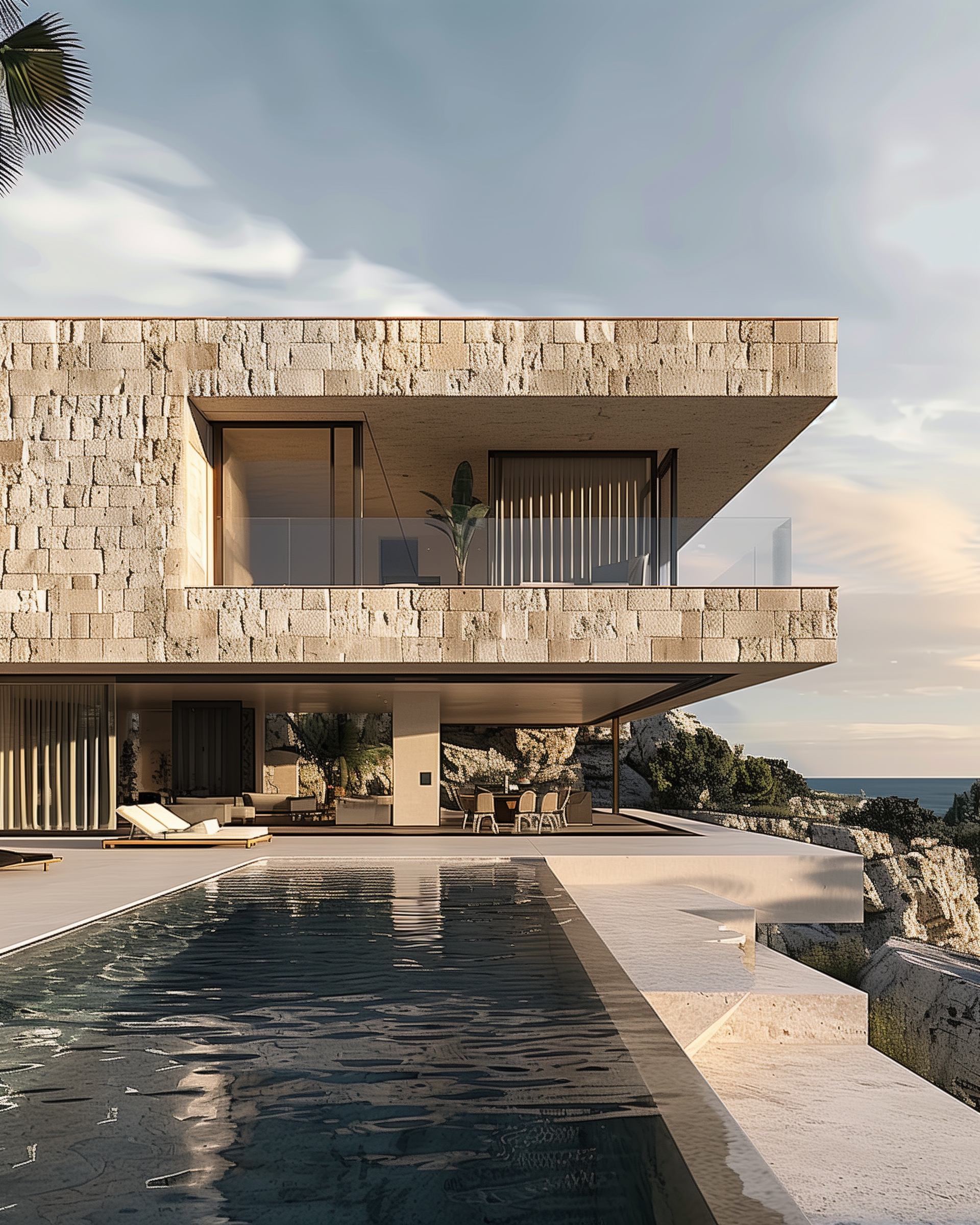
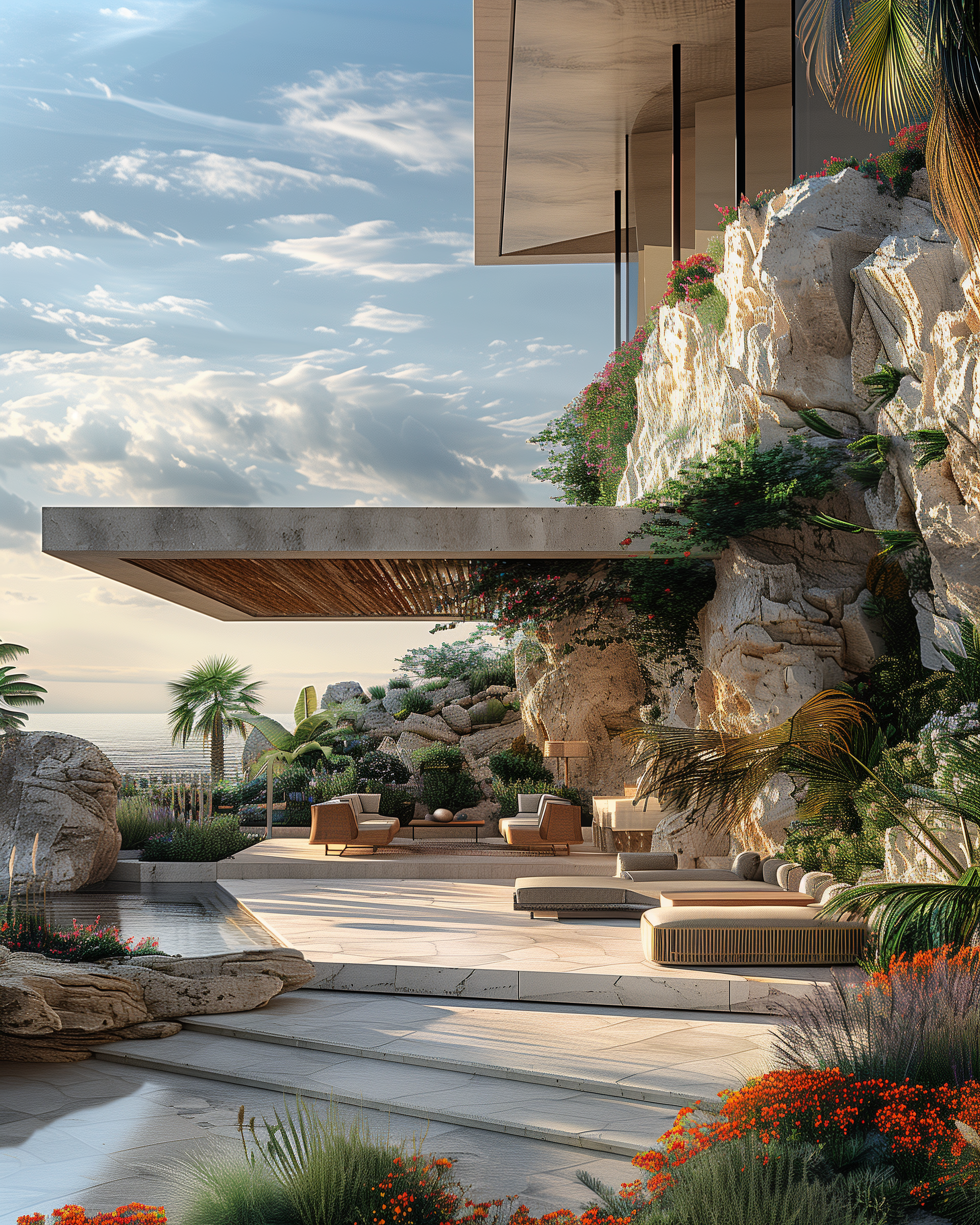
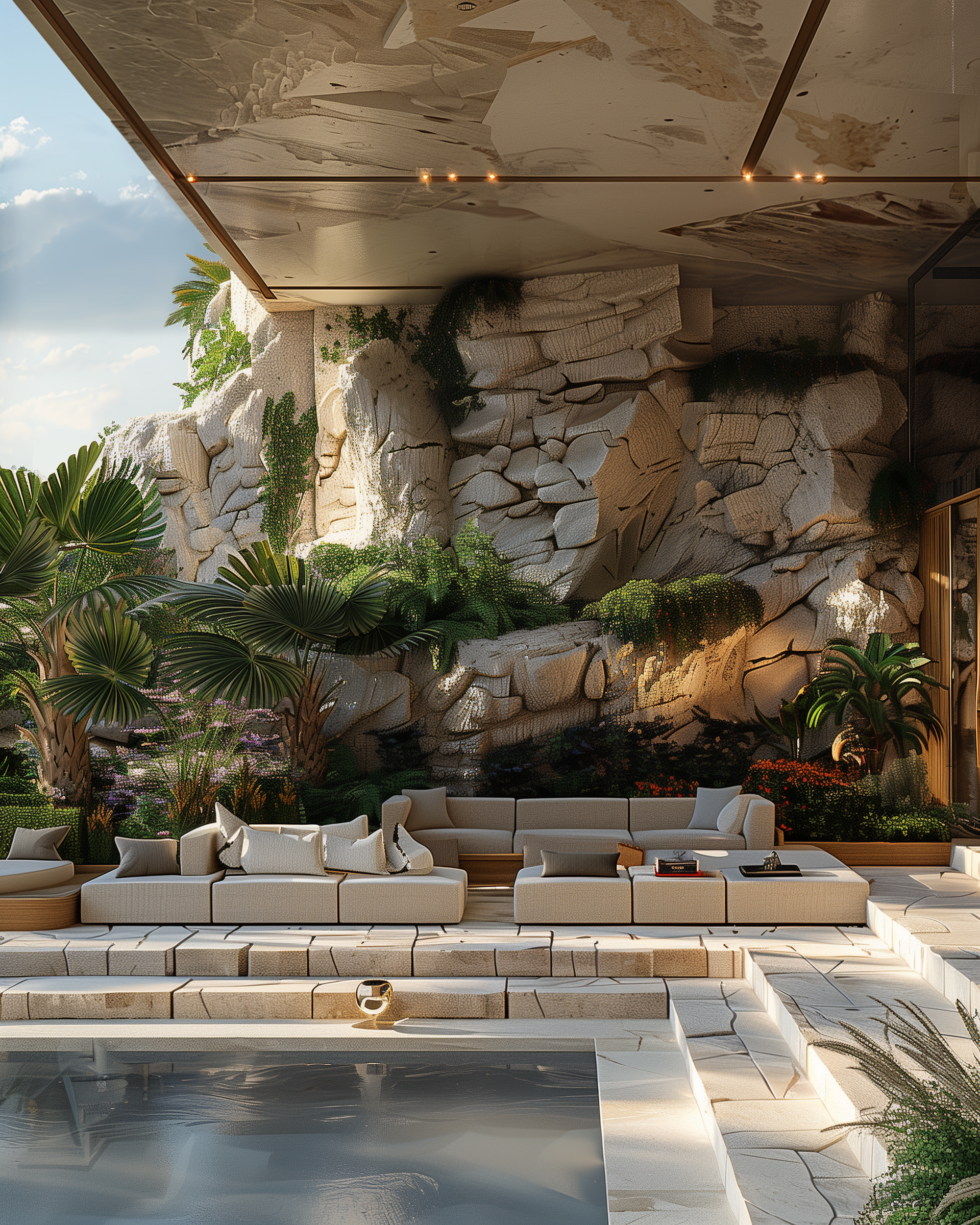
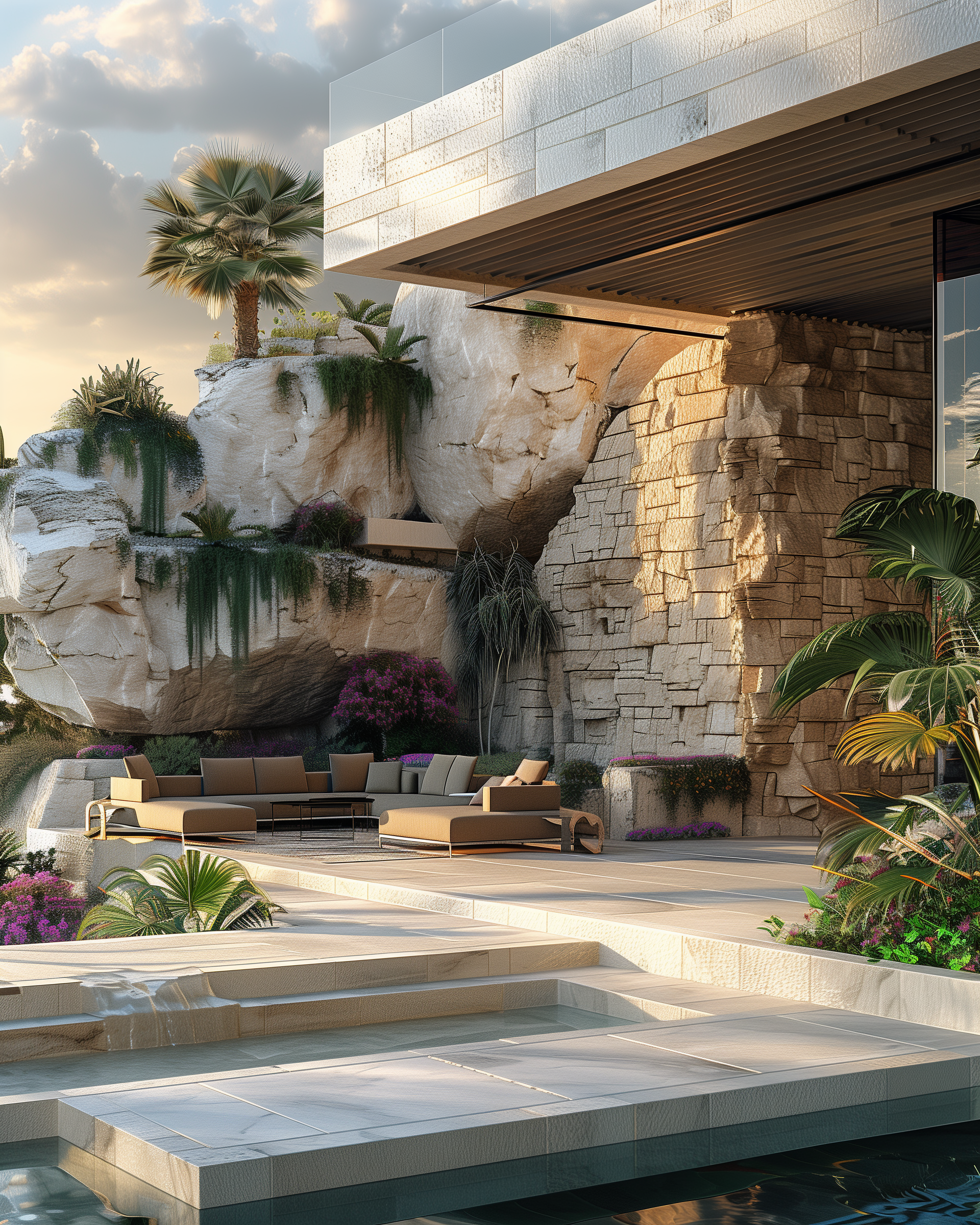
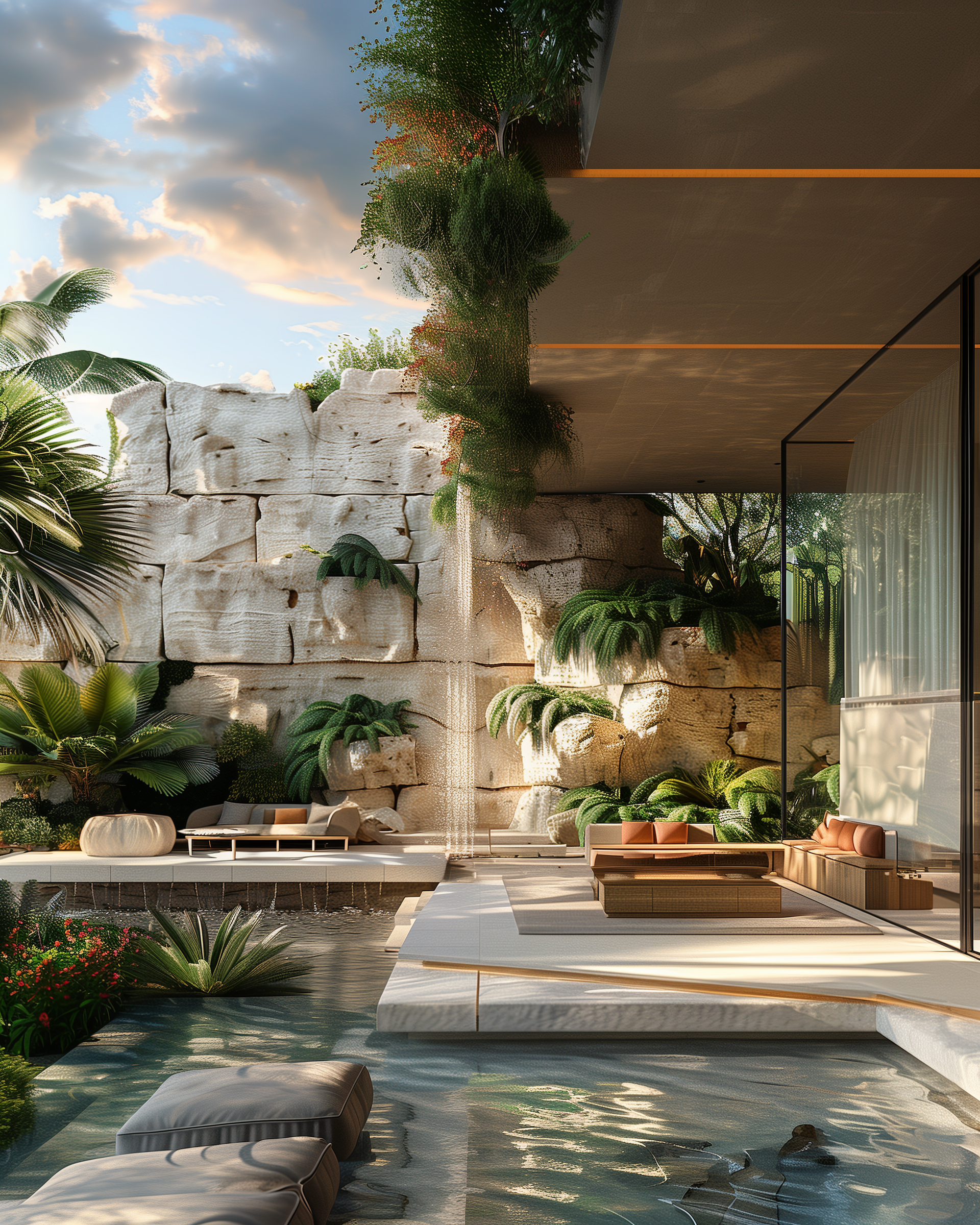
Stained Glass
Stained glass is not commonly used in residential architecture but I think thats all the more reason to explore how it could be incorporatedf as a feature in a modern villa. It certainly does add a striking splash of colour injecting life and playfulness into otherwise stark minimalist form. It should definitely be used sparingly and with restrain, lest we risk coming up with a result that looks more like a place of worship than a home.
Stained glass can be used in different variations depending on the desired effect:
Cathedral - single-color, translucent with smooth finish
Opalescent - opaque or semi-opaque that can blend different colors.
Antique - hand-blown with slight imperfections and variations for a vintage look. Flashed - clear or colored glass with a think layer of another color for etching or cutting patterns Textured - with various surface patterns, hammered, rippled etc.
Seeded - clear or clored with small air bubbles trapped inside
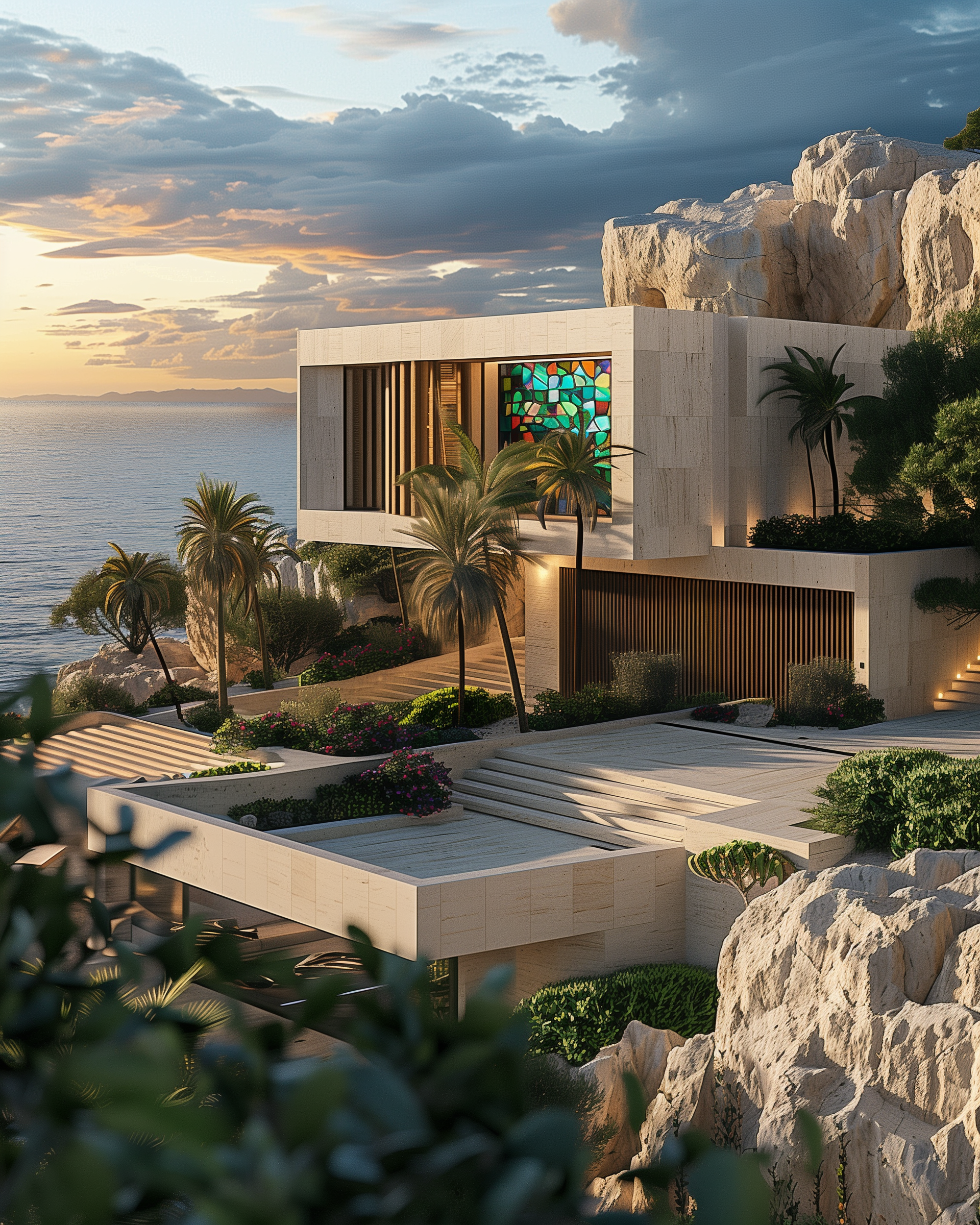
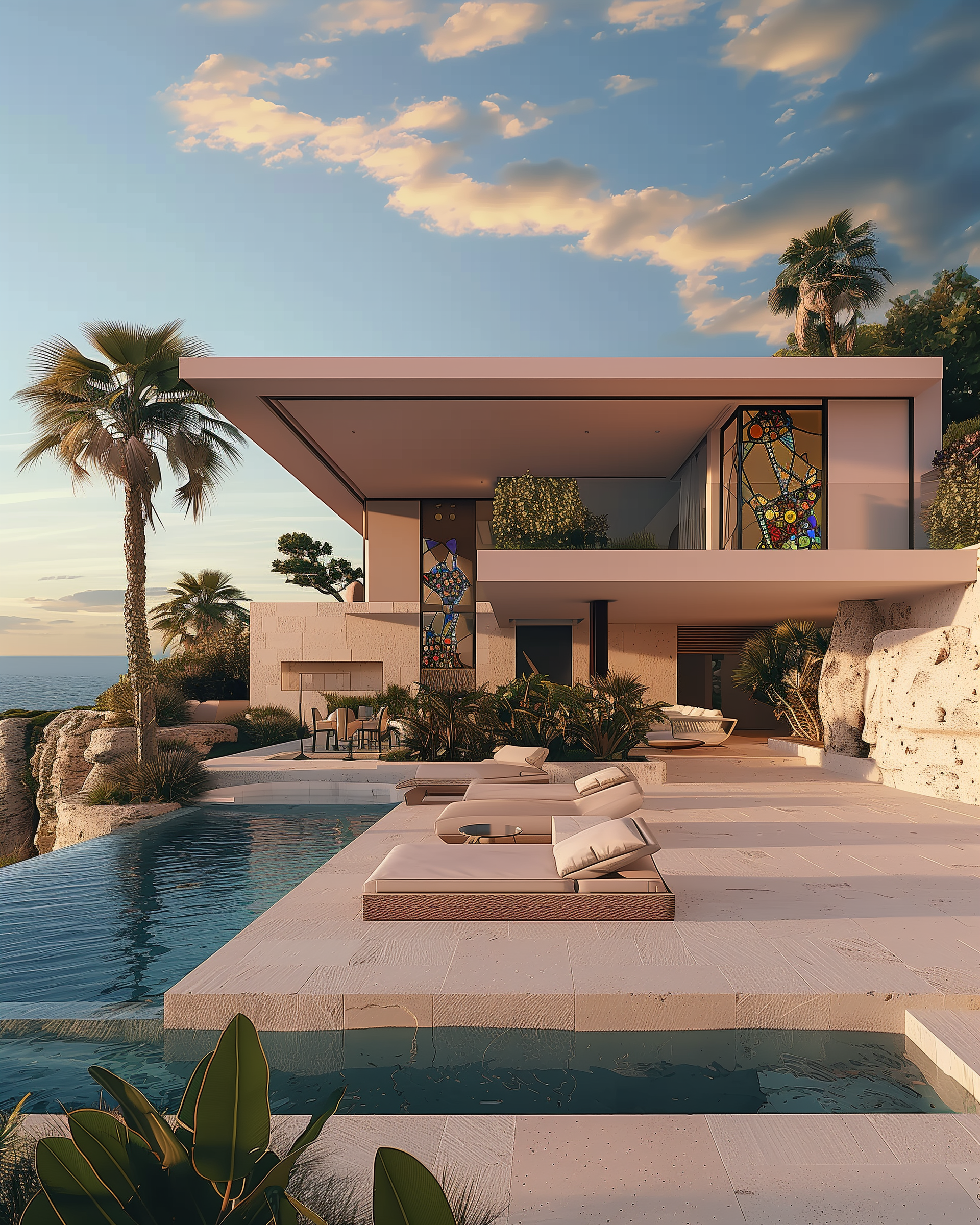

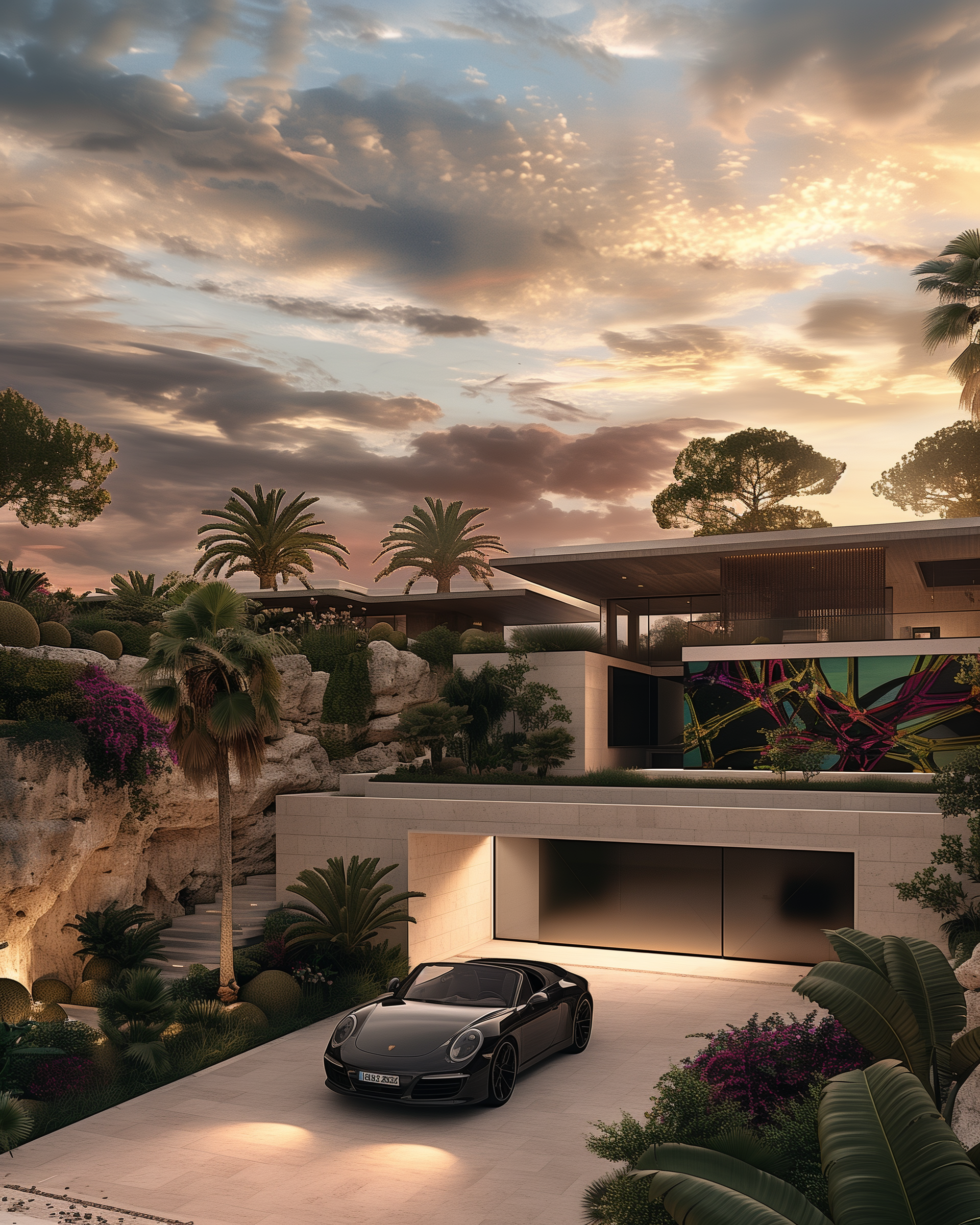
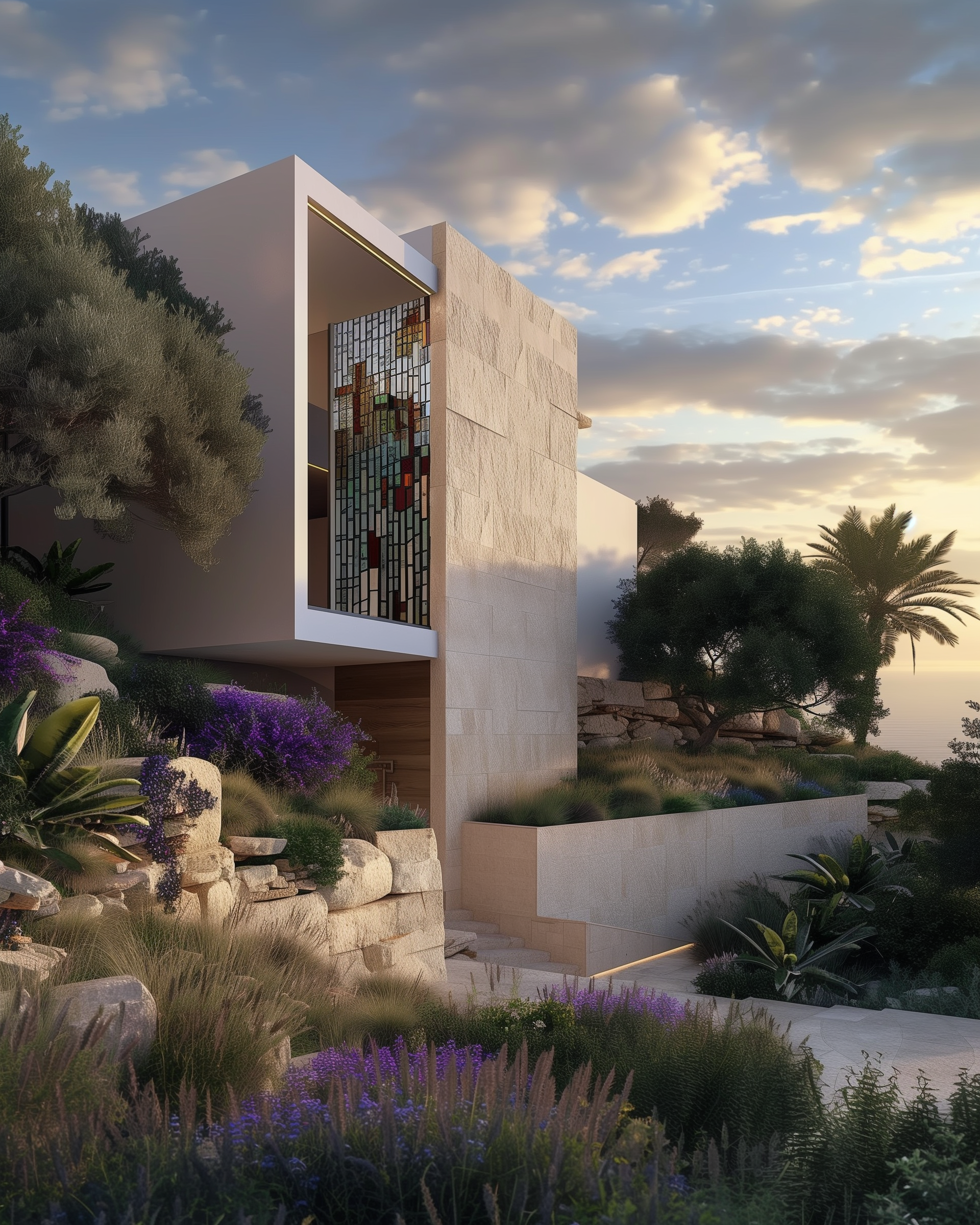

Linen
To me linen curtains are all about emotions. Tey really enhance the connection with the nature, always changing with the wind and the sun. This is why for this Material Monday I take you through a full day in an Ibiza Villa so you can see what I mean for yourself (hopefully).
Depending on the desired aesthetic you can choose a different style:
Belgian - high-quality, soft, durable and luxurious, for elegant applications
Washed - soft, relaxed look and and feel, good for casual looks
Sheer - delicate and lightweight, semi-transparent allowing light to filter through Heavyweight - thicker with a denser weave, formal and traditional Embroidered - adding intricate detail and touch of old-world elegance
Blended - linen mixed with other fibers like cotton and polyester offering a softer feel Linen voile - very lightweight, beautifully diffusiong the light
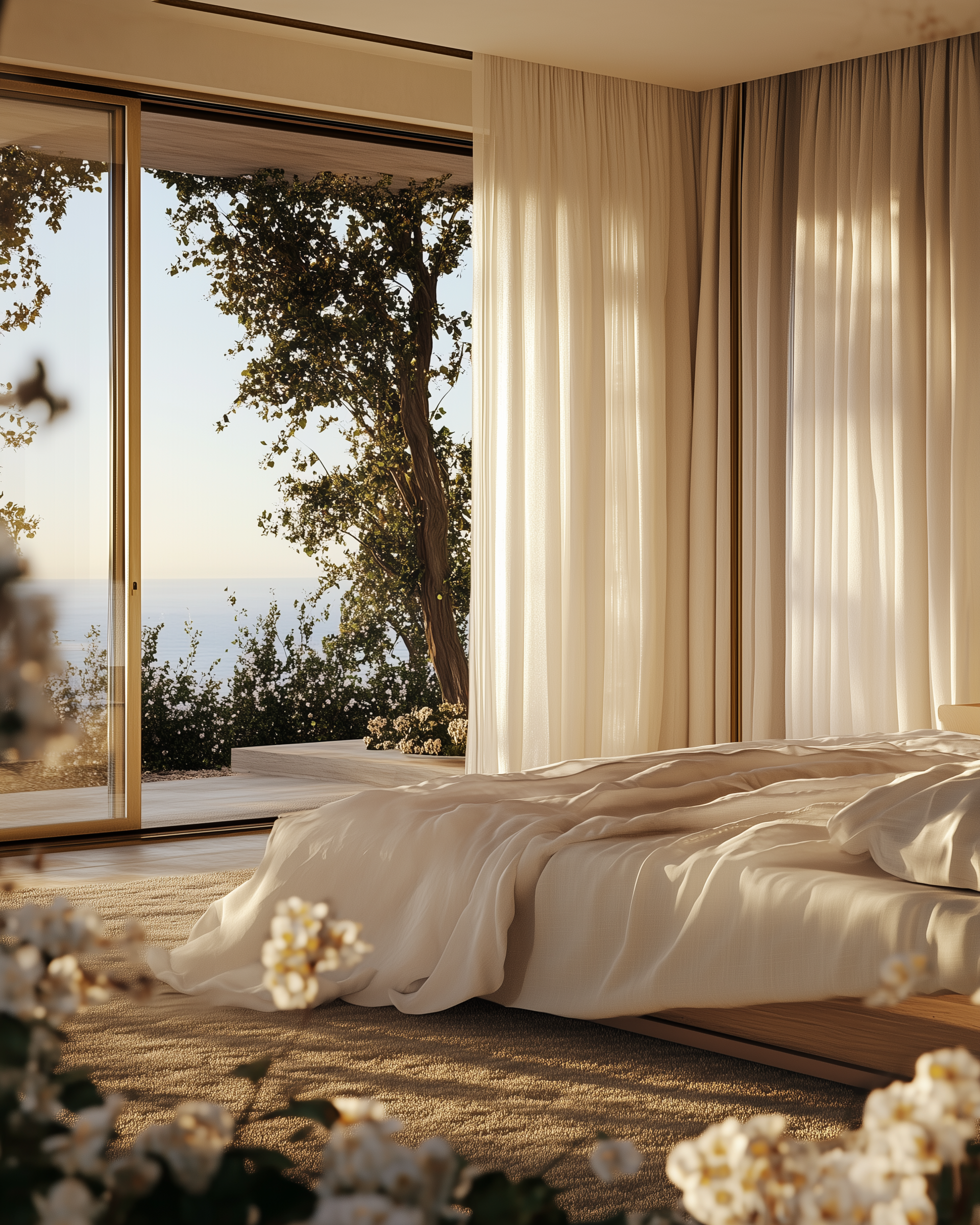
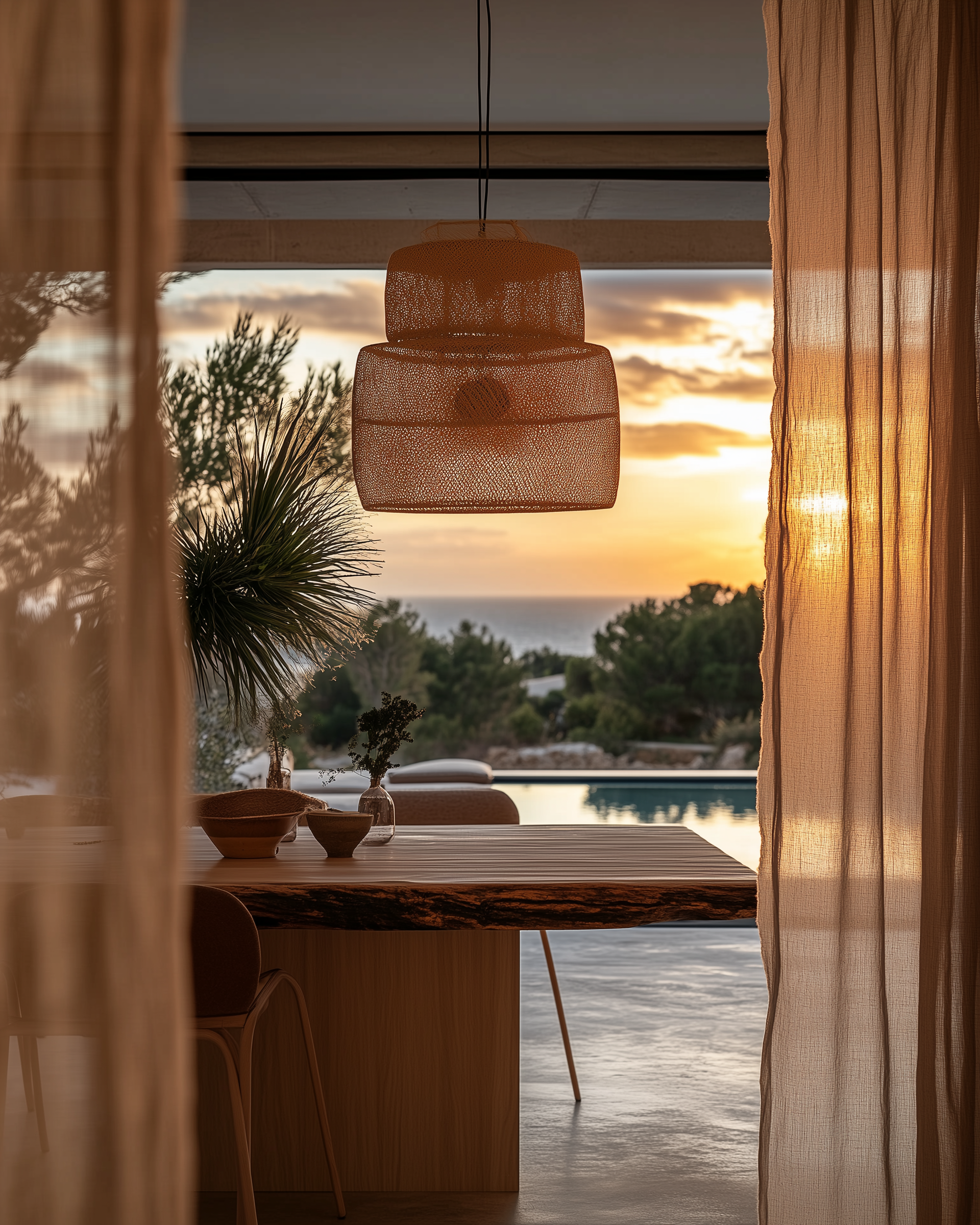
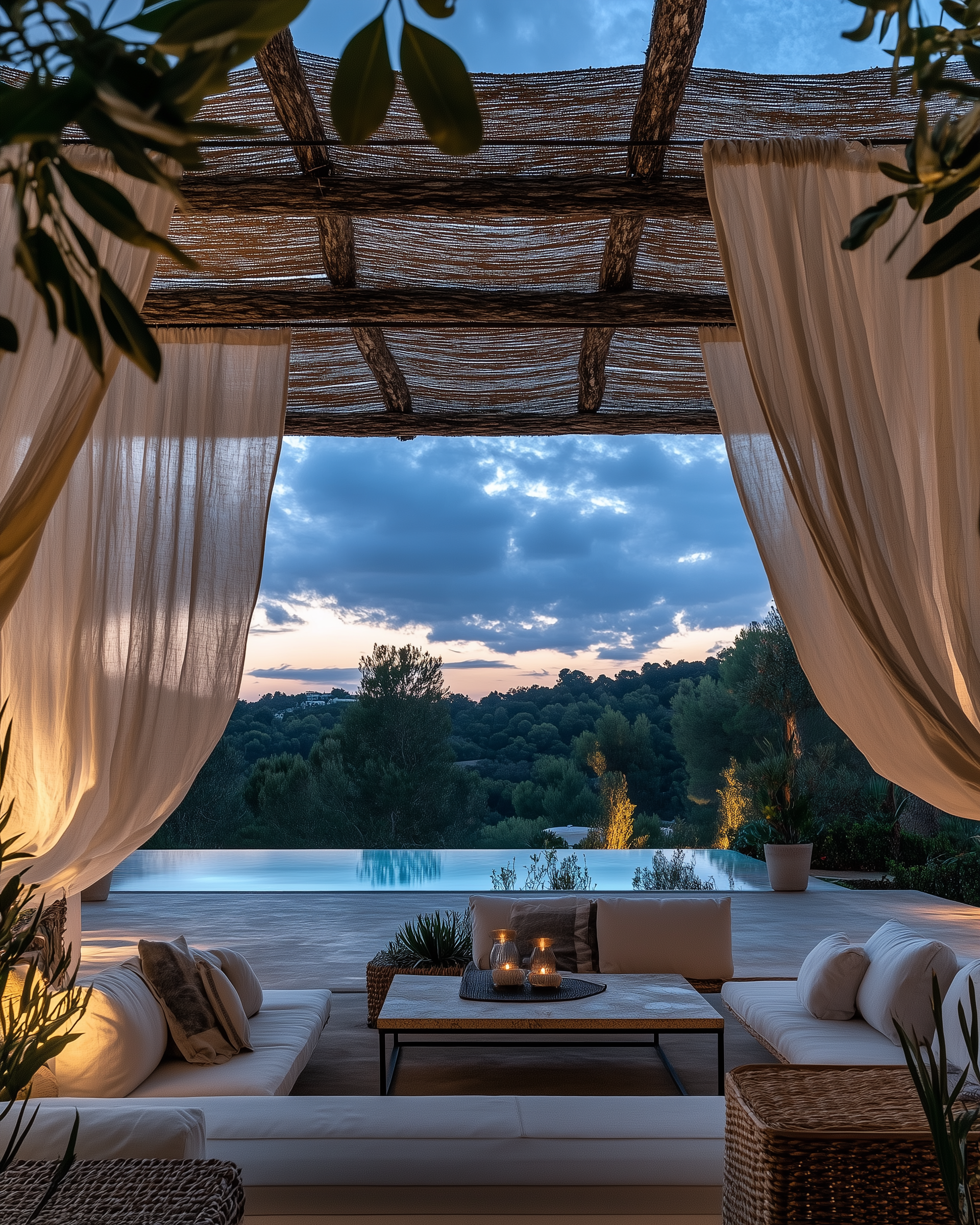

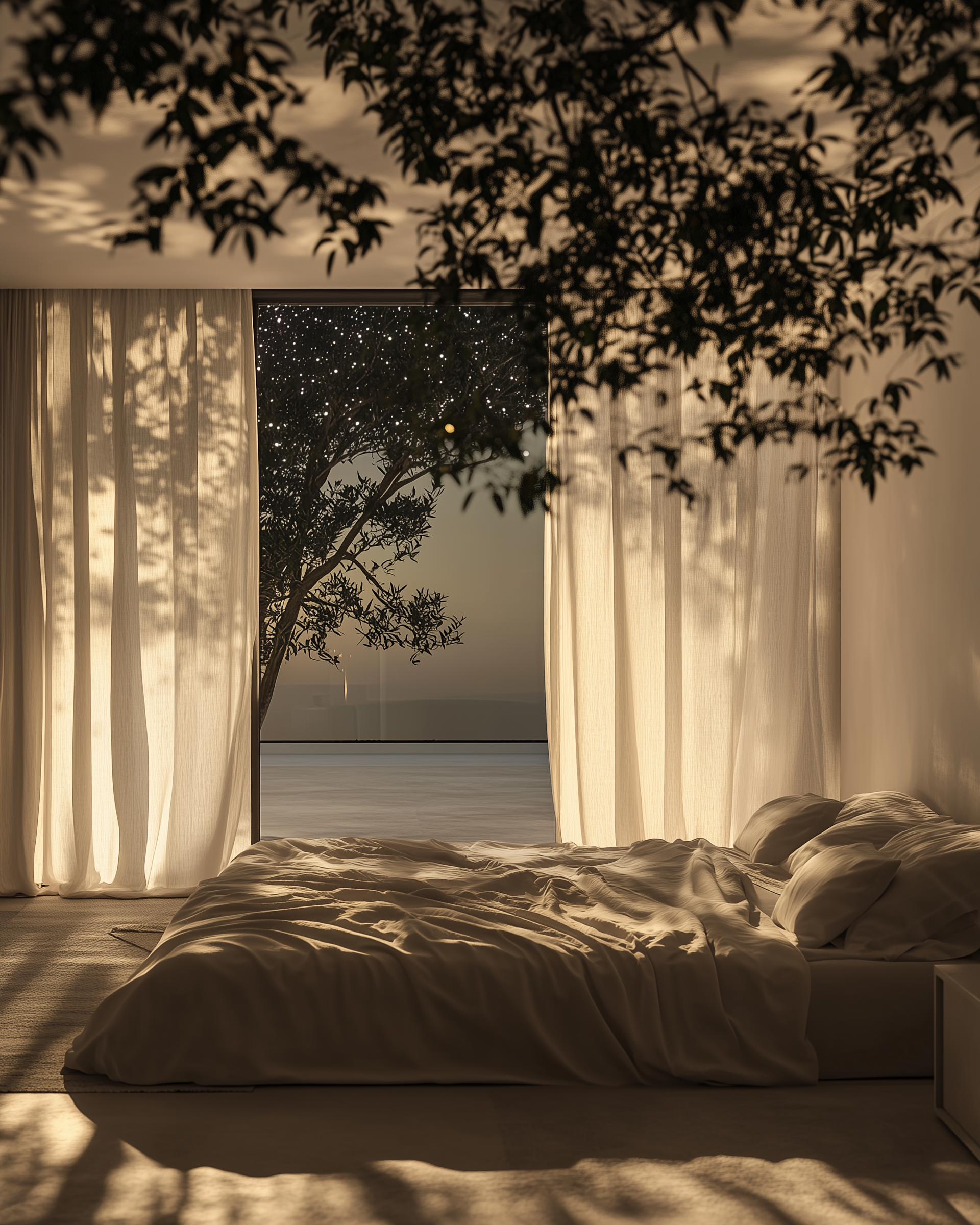
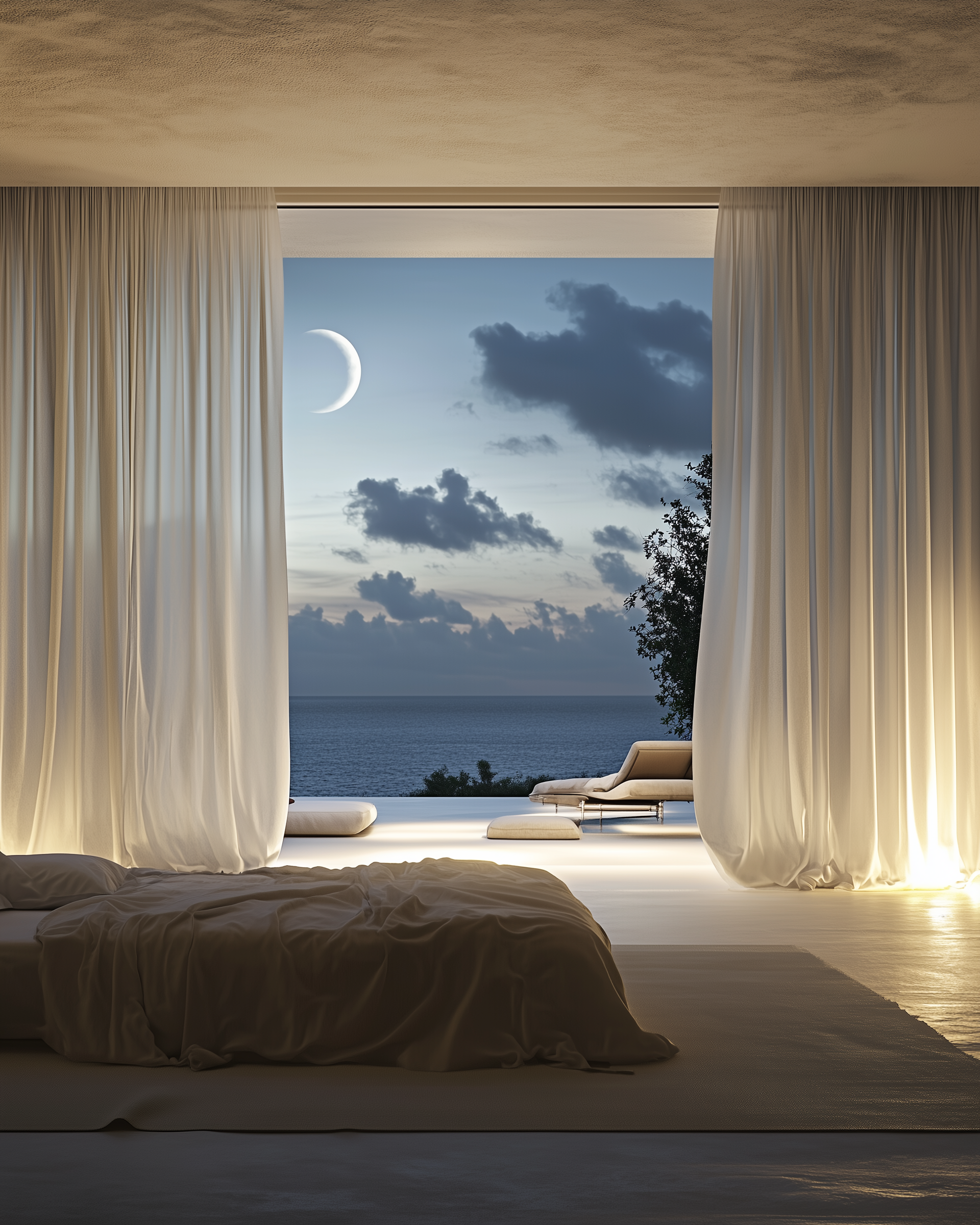
Serpentinite
For todays Material Monday we look at the uses of Serpentinite stone which can be a very interesting accent, especially when combined with leafy plants. Comes in variety of green shades as well as black and brown. When polished it resembles marble. Naturally heat resistant. One thing to keep in mind is that, similarly to marble, it is a relatively soft stone so its not appropriate for all surfaces and has to be carefully maintained. Chrysolite which is a certain type of serpentinite may contain asbestos fibers but hopefully you would not be coming across this variety on the market.
Available types:
Green - most common, with deep green hues and subtle veining, countertops and wall cladding
Veined - with dramatic veining patterns adding visual interest, great for statement walls
Black - dark green to black tones with polished surface, lovely for flooring Golden - with golden-brown tones and veins, unique aesthetic for feature walls and decoration Antigorite - denser, more durable type often used for sculptures and stonework
Lizardite - soft, less durable used for small decorative elements
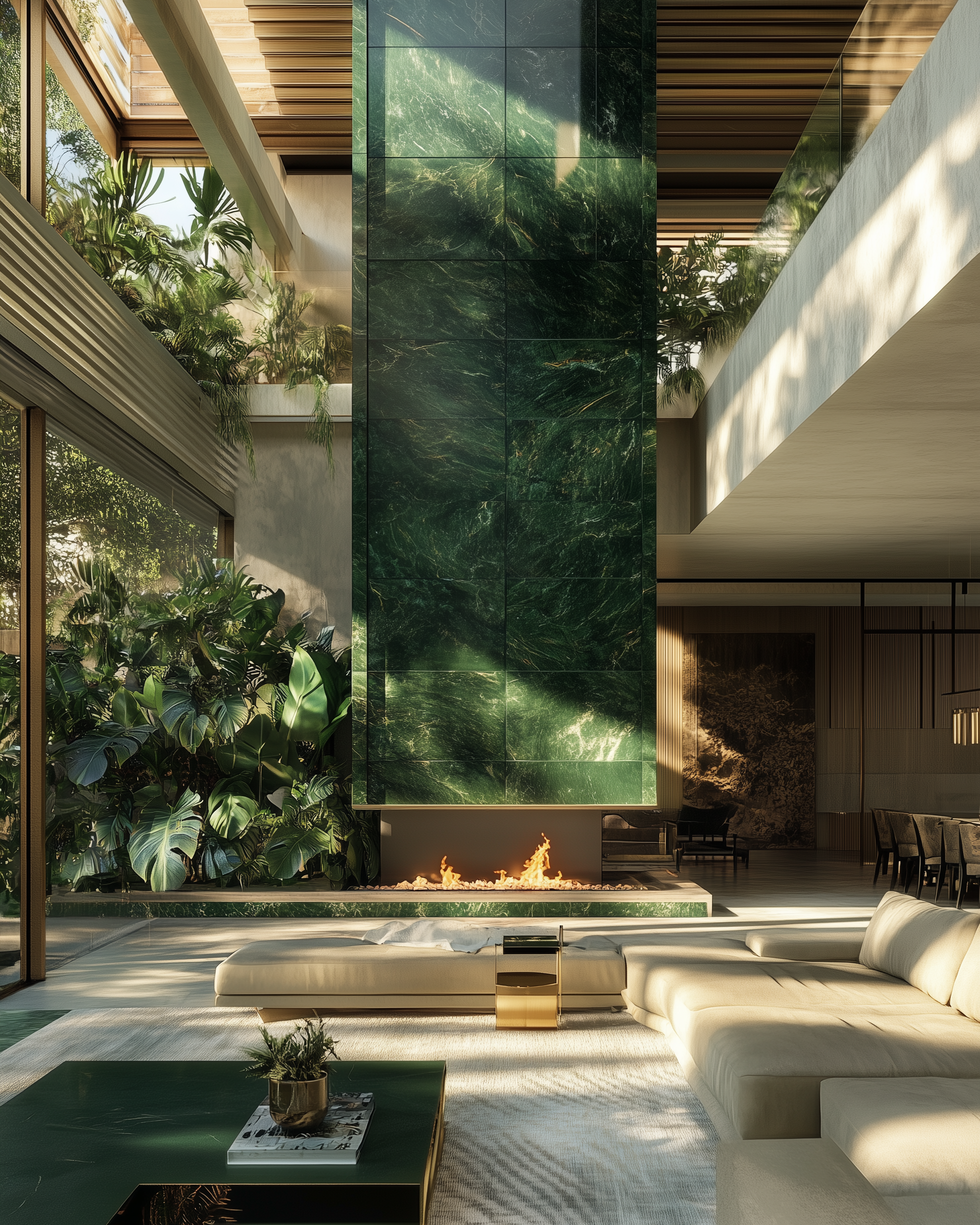
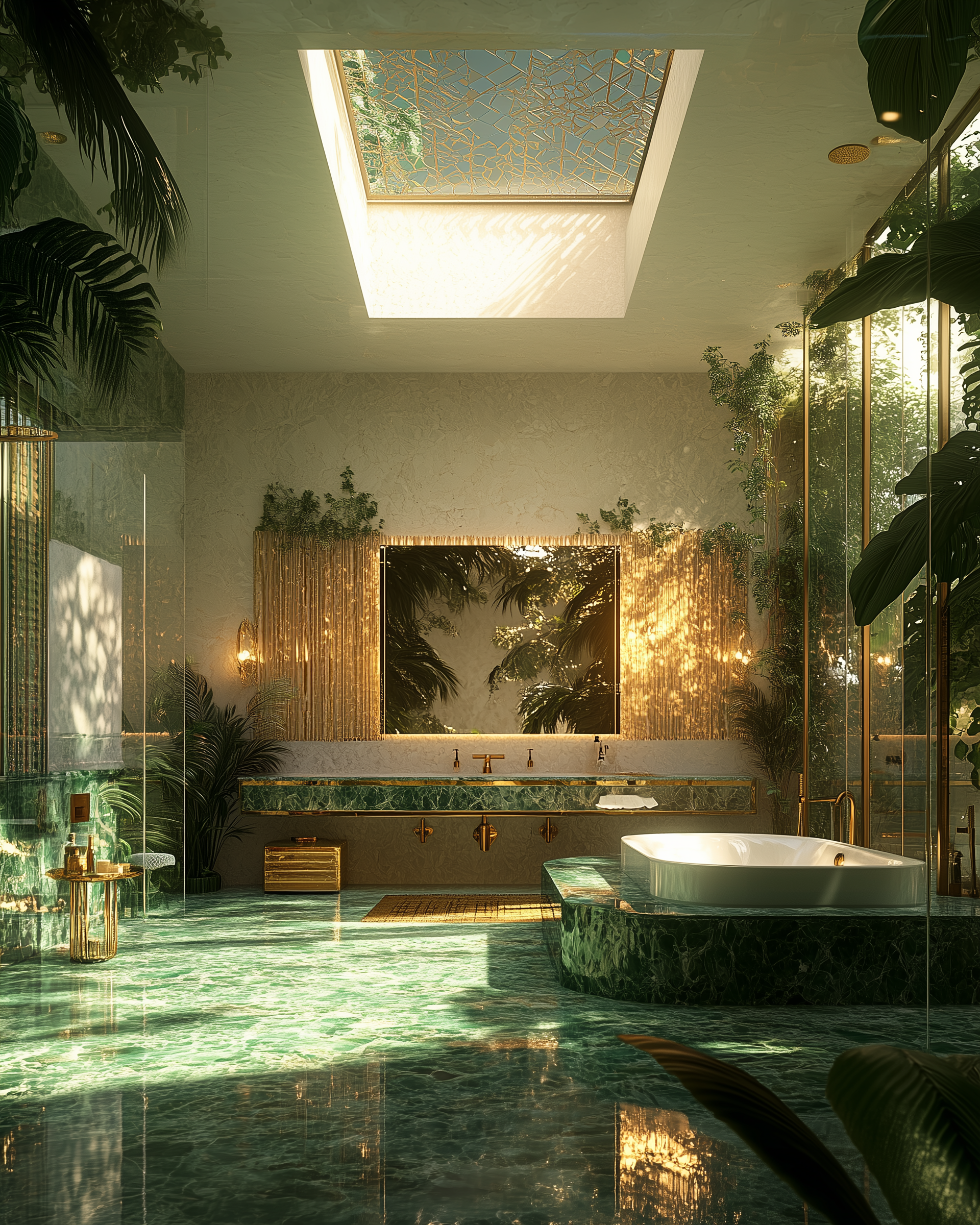
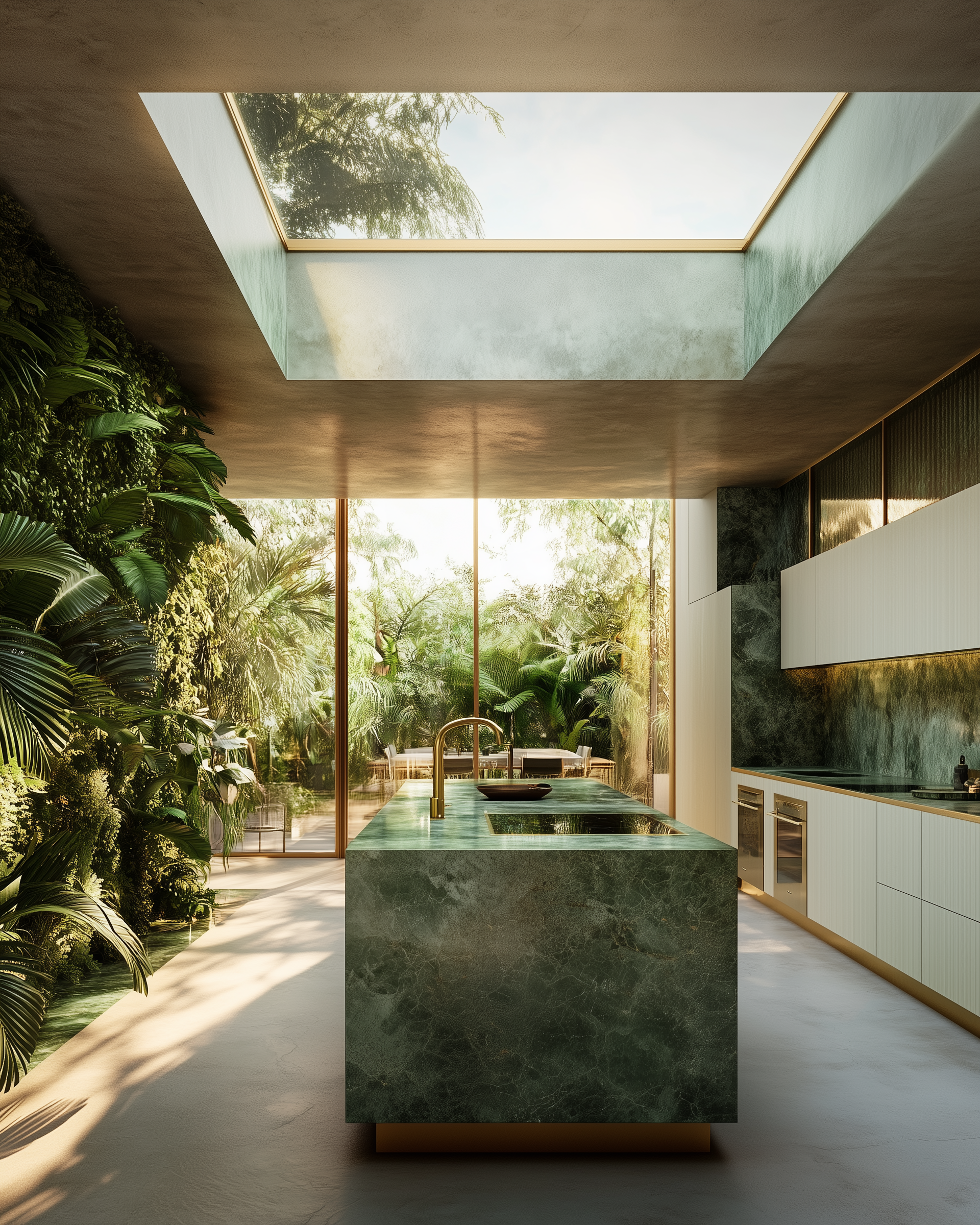
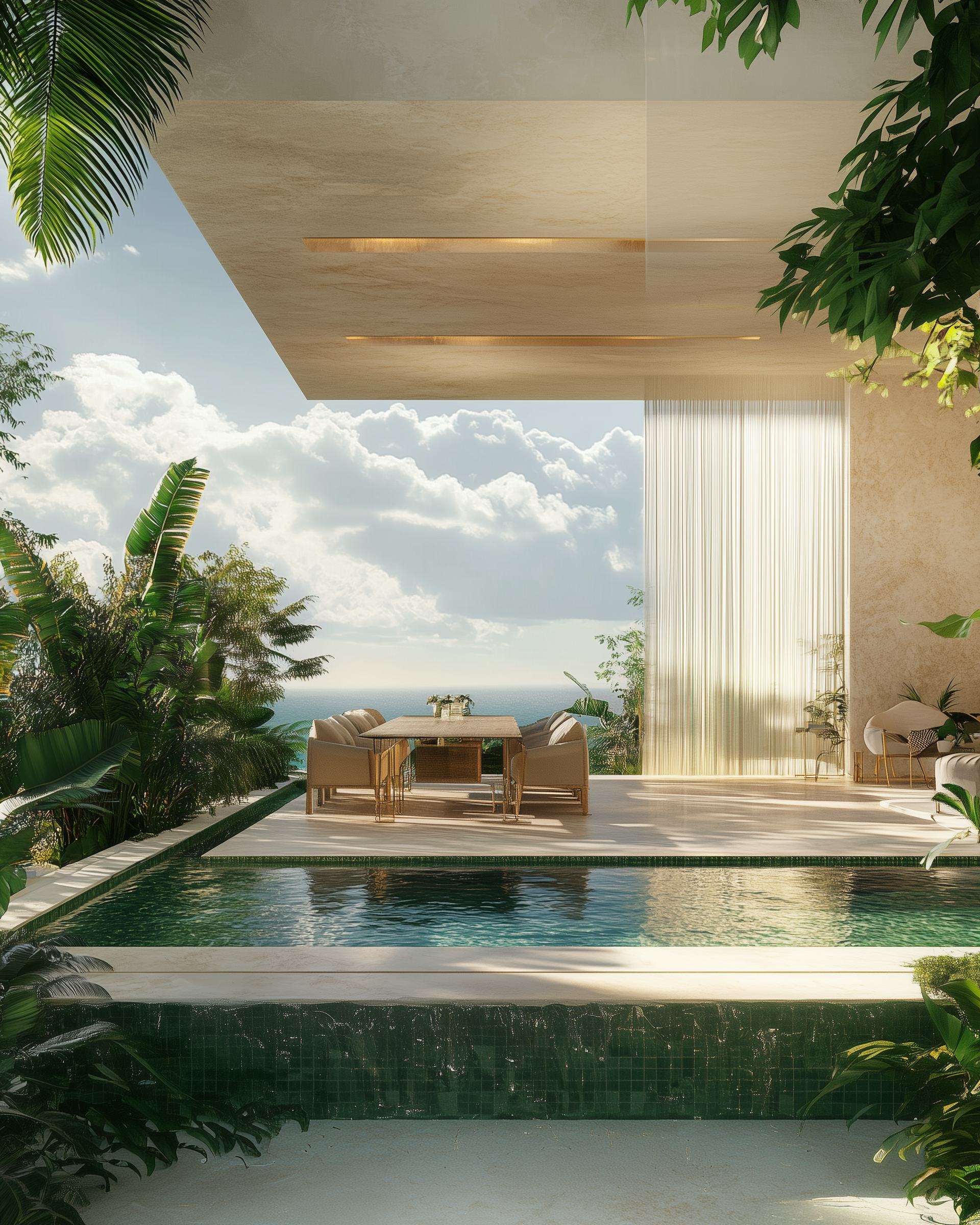
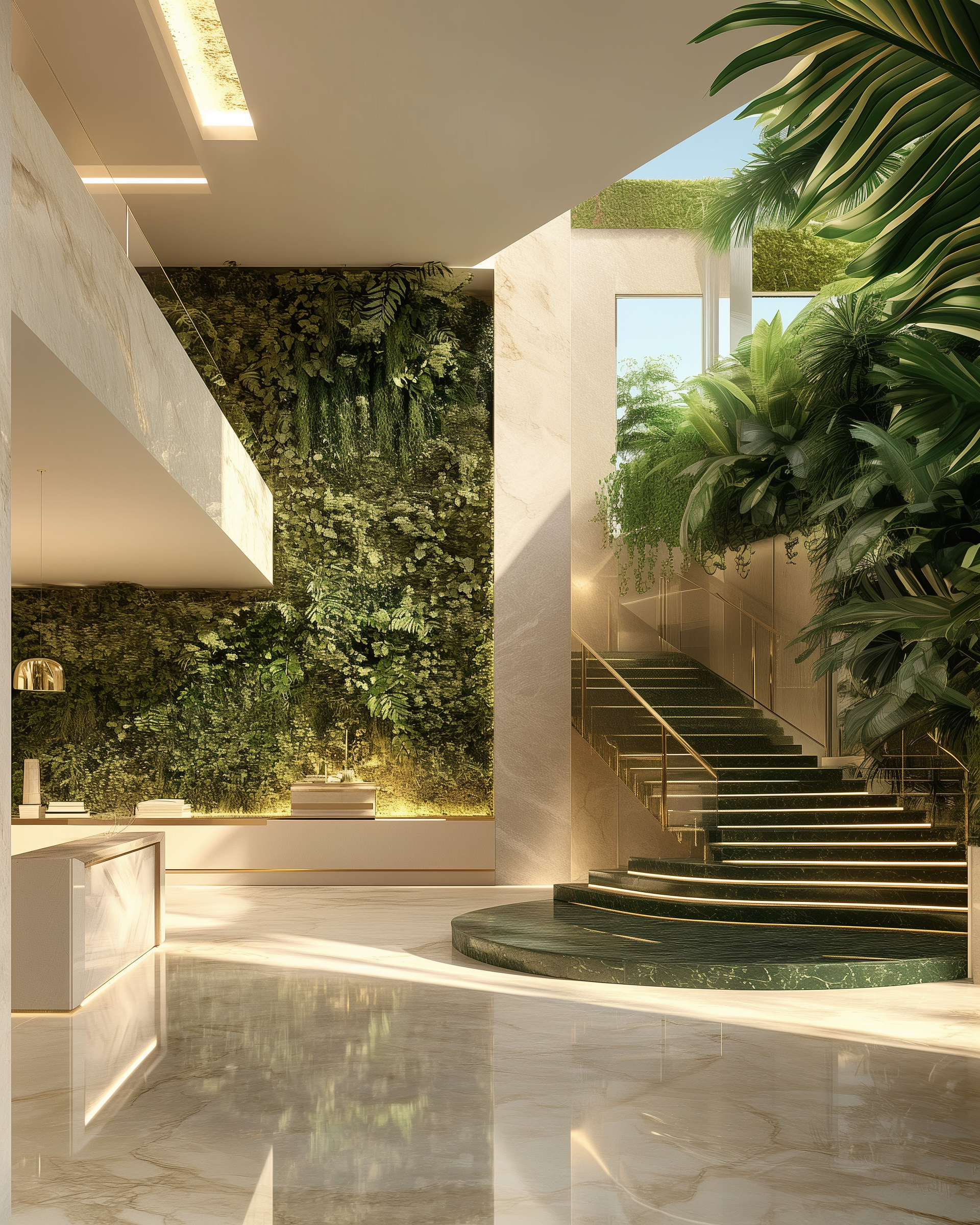
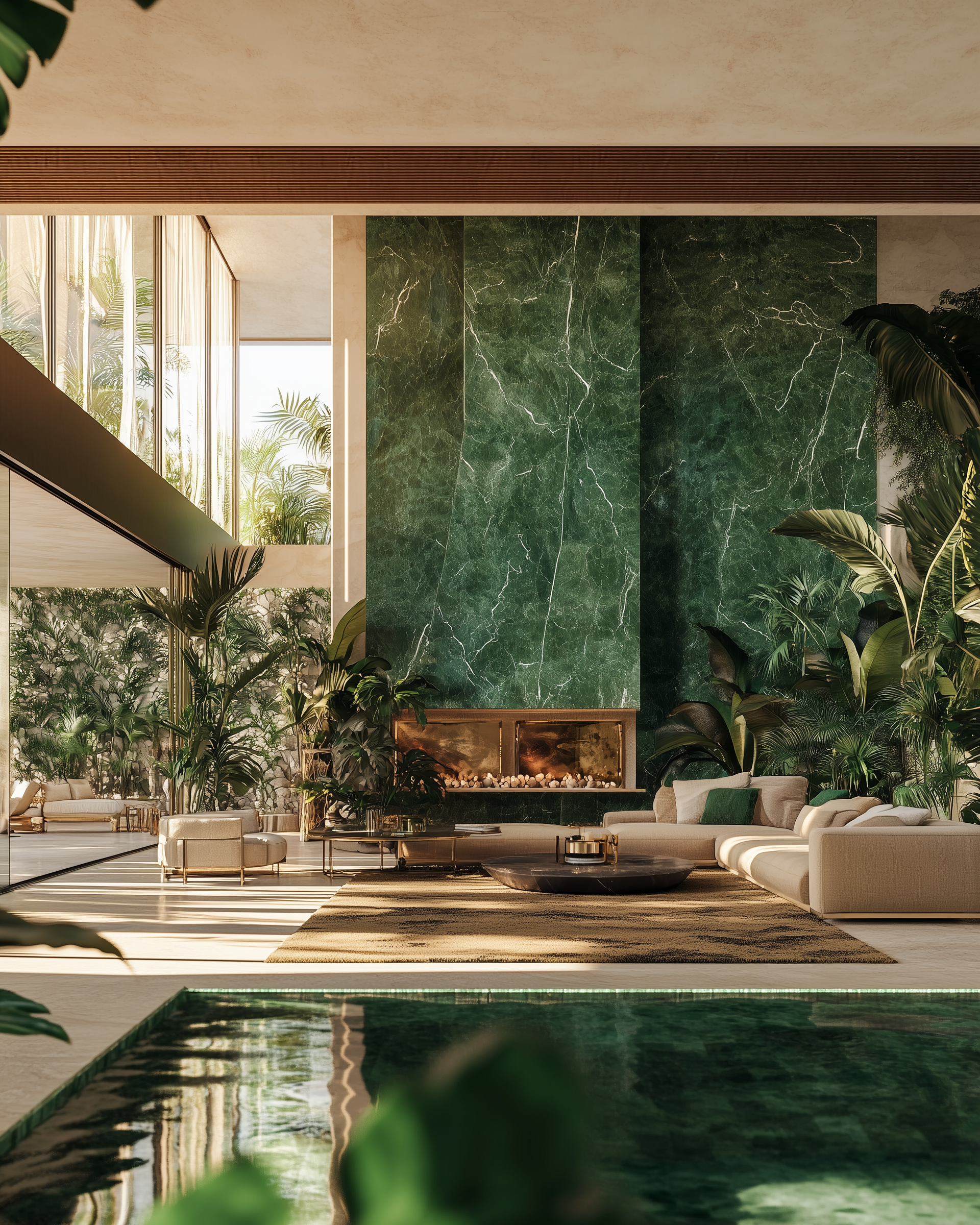
Stamped Concrete
The uniqueness of this material (or technique more precisely) lies in its absolute versatility. You can stamp literally anything into concrete. You can make it imitate materials like wood, stone or brick. You can then further enrich them to introduce various patterns or themes.
Most commonly seen effects include:
Ashlar slate - mimics the look of natural slate with irregular rectangular patterns
Cobblestone - replicates the texture of cobblestone for an old-world charm
Brick pattern - imitates the look of traditional brick paving, often for driveways Wood plank - look of wooden floorboards with realistic grain patterns with lower maintenance Flagstone - mimics large, irregularly shaped stones, patios and walkways
Seamless stone - continous stone texture giving a smooth, natural look
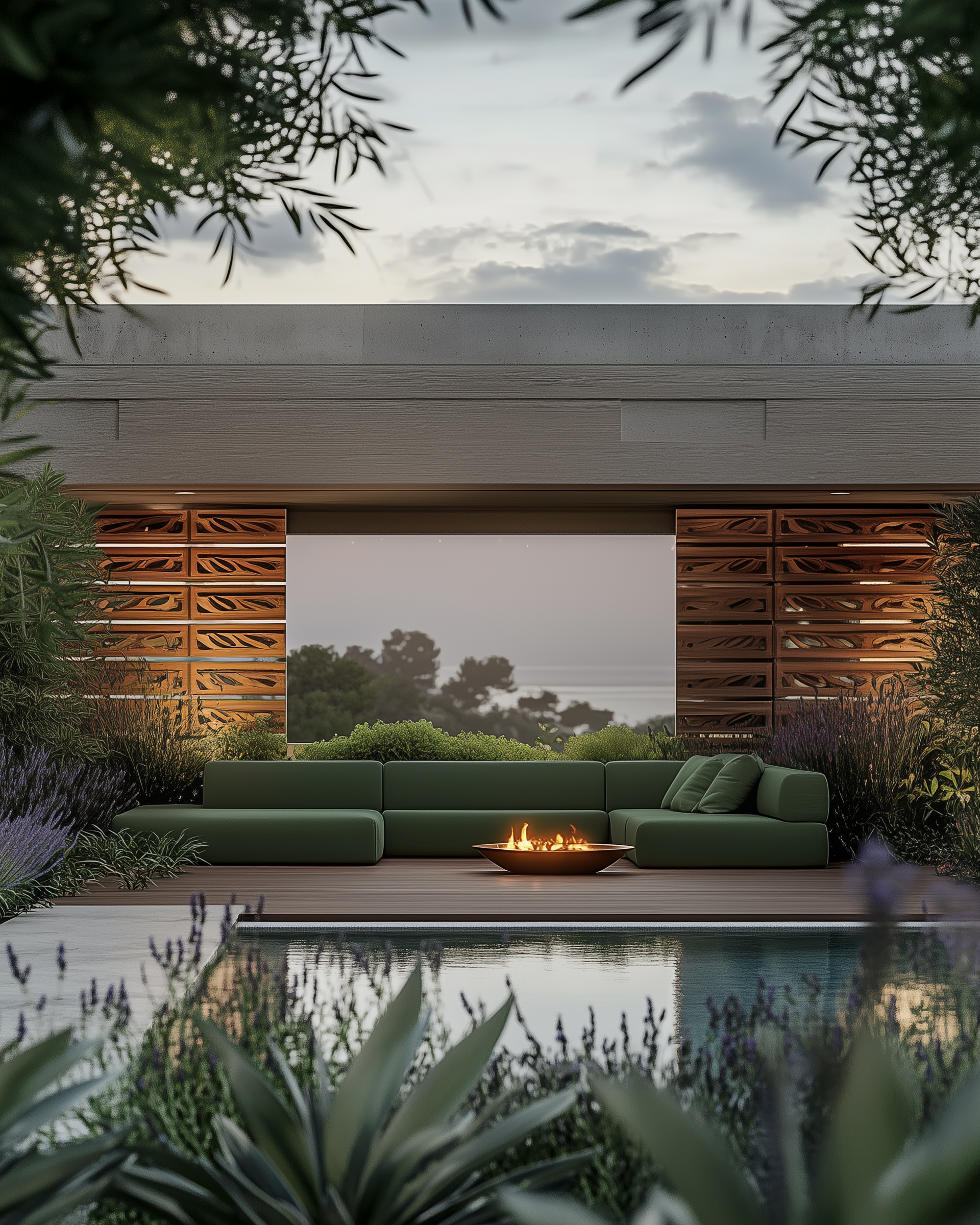
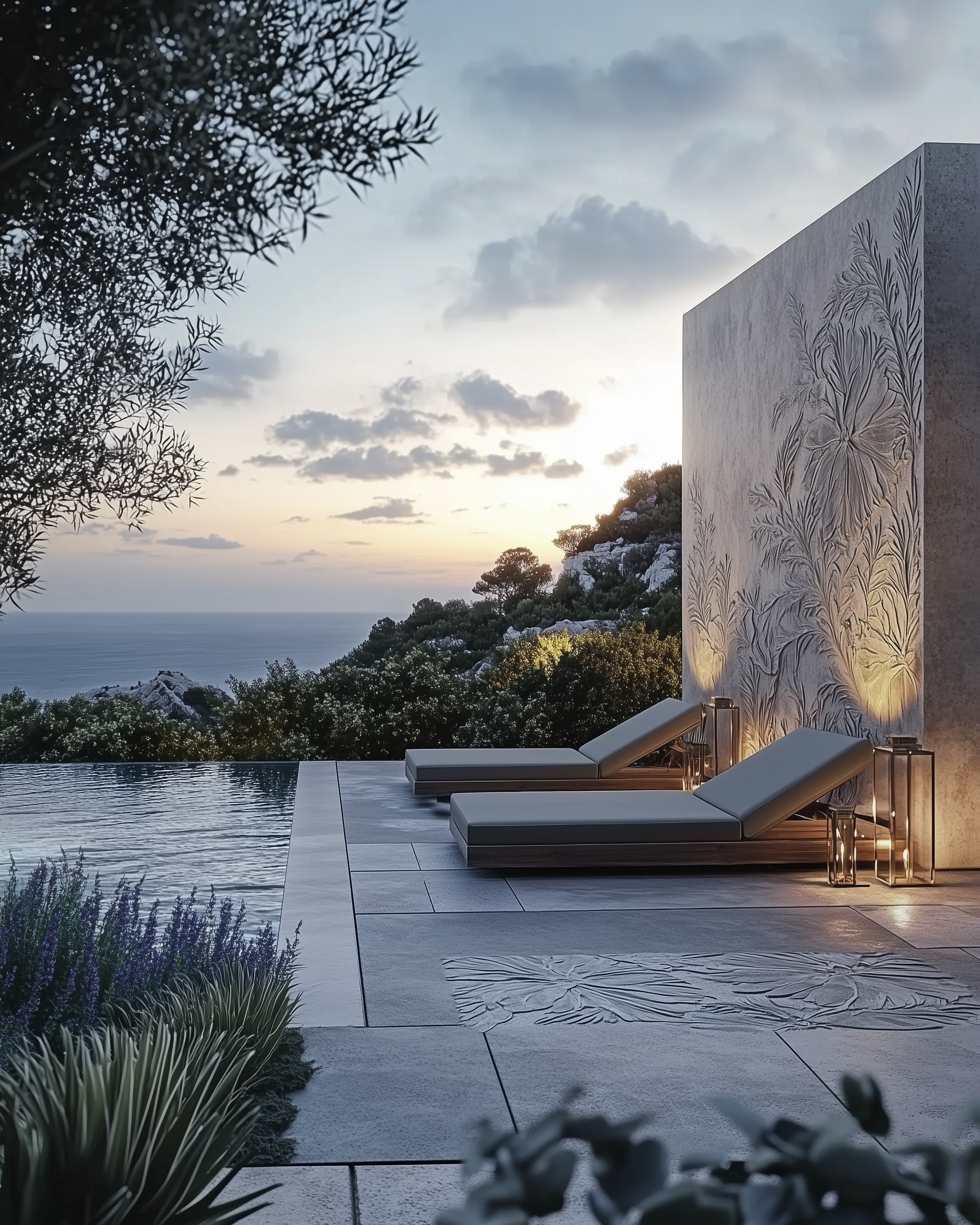
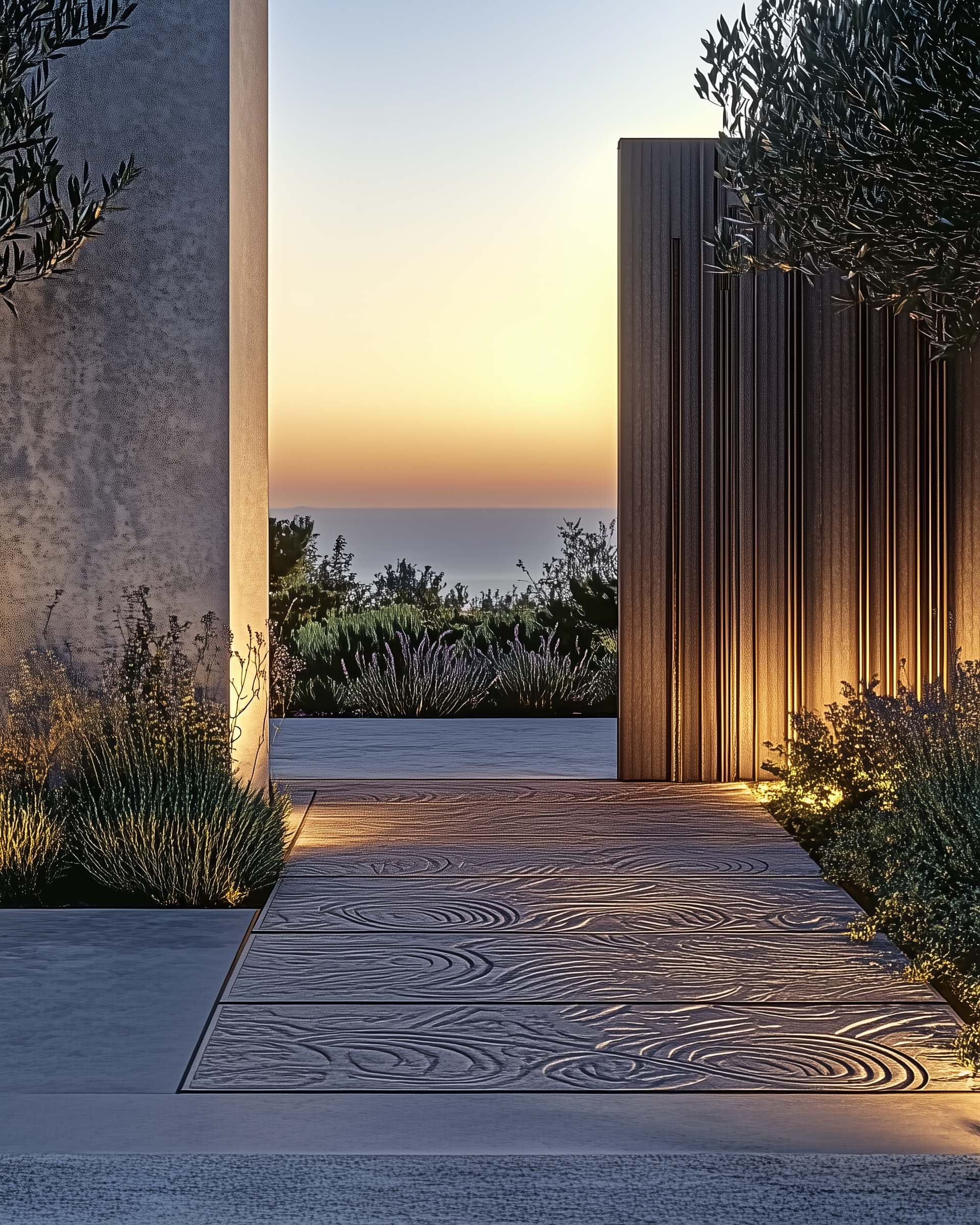
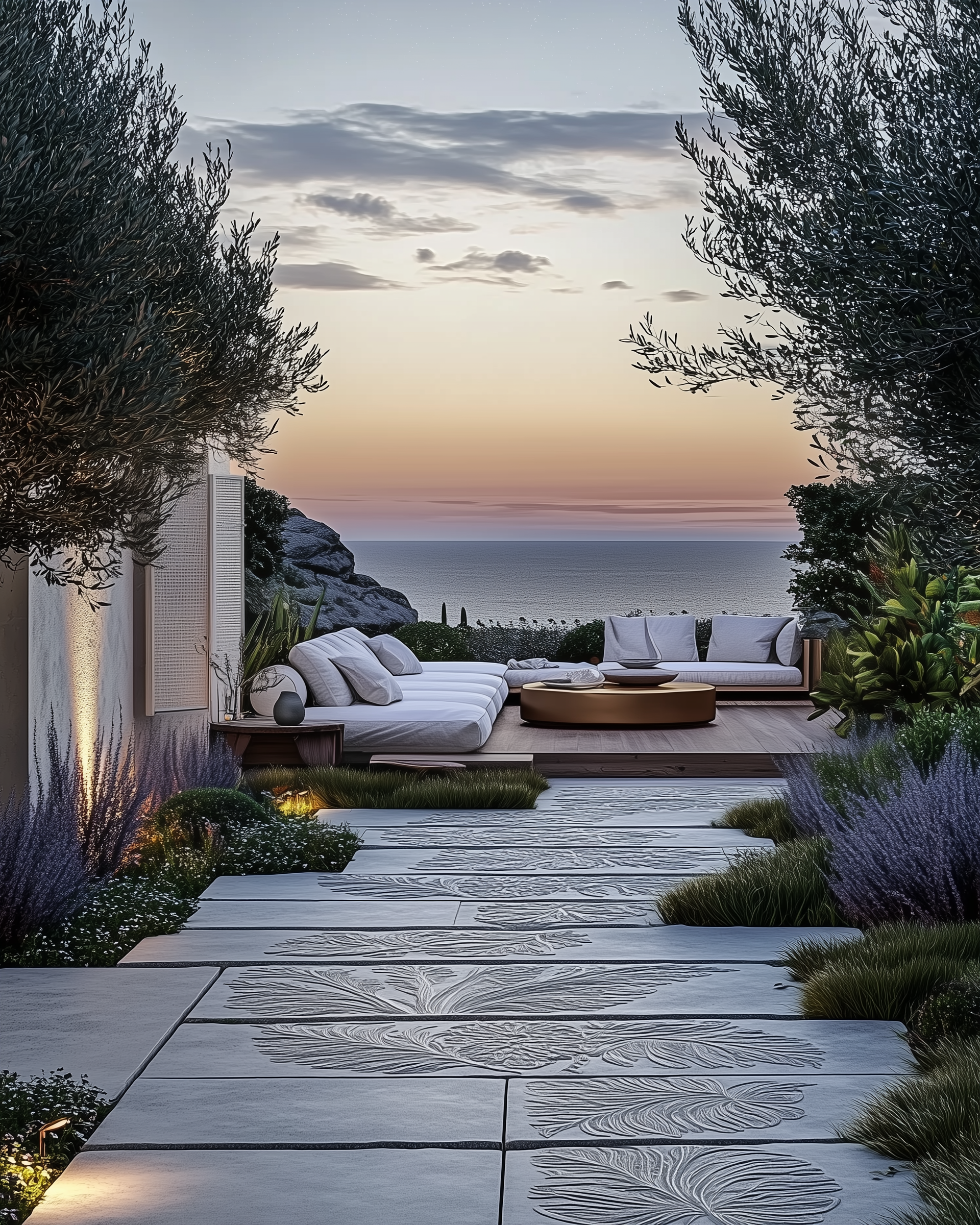
Terrazzo
Terrazzo is hardly a new technique since it origniates from 15th century Italy, when Venetian construction workers used remnants of marble to create inexpensive flooring. I feel like it suffered a bit of a bad rep due to its popularity in vary basic form. I would like to show some examples where it can be reinteroduced alone or in combination with some other materials and water to create a stunning designs.
Terrazzo is made by mixing chips of marble, quartz, granite, glass, or other suitable materials into a cement or epoxy binder. The mixture is then poured, cured, ground, and polished to create a smooth, durable surface.
It is a very versatile material since it can be used to create very elaborate shapes in all colours and range of effects depending on what aggregates are used in the mix.
Terrazzo is available in a myriad of types including:
Cementitious - traditional option with cement as binder
Epoxy - using resin as binder provides a thinner, more lightweight option
Sand cushion - thicker system with sand cushion base providing more crack resistance Monolithic - single-layer system where terrazzo is applied over a concrete slab Rustic - textured, anti-slip finish for outdoor uses
Thin-set - epoxy-based allowing for installation over exisitng surfaces





